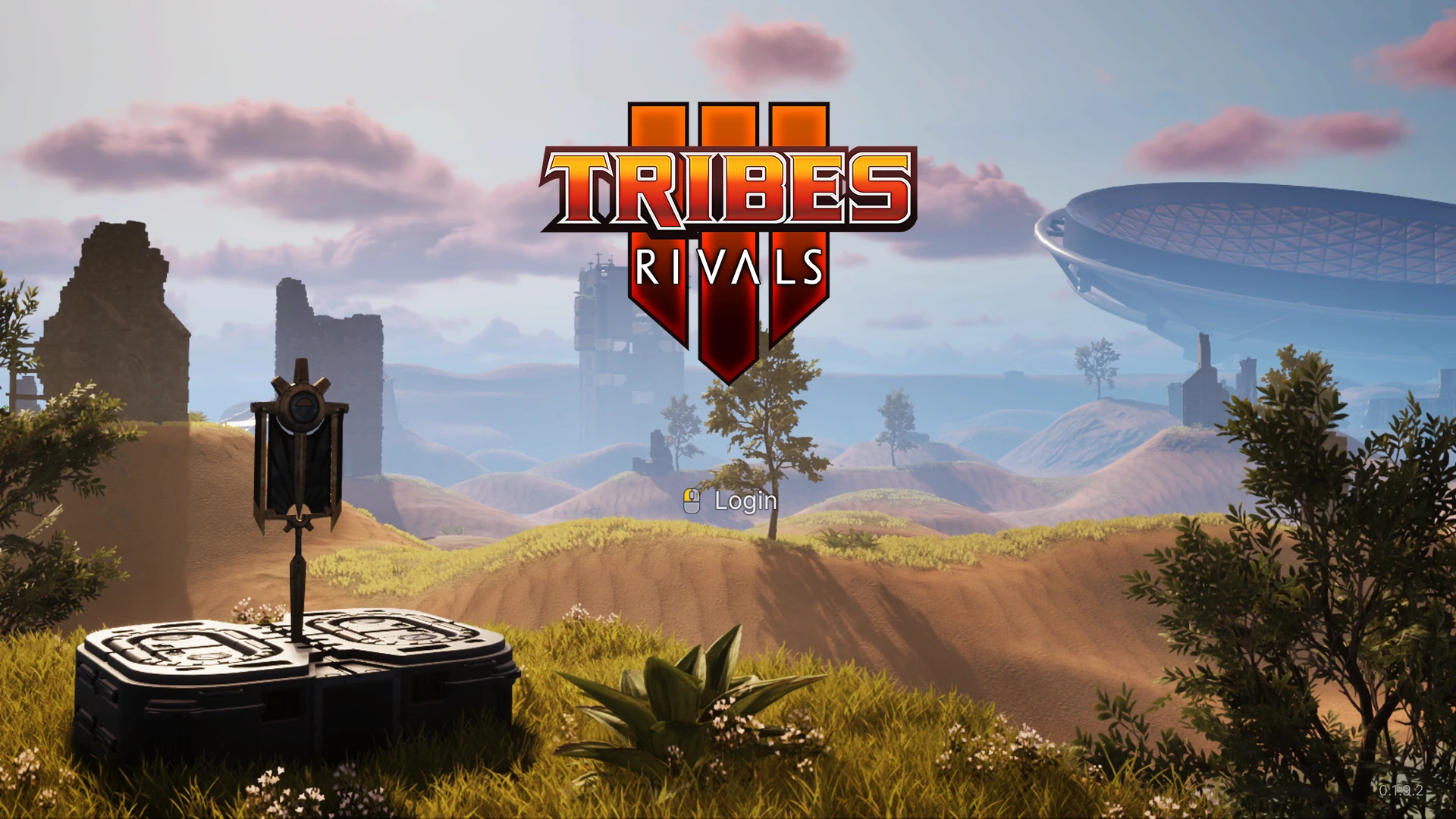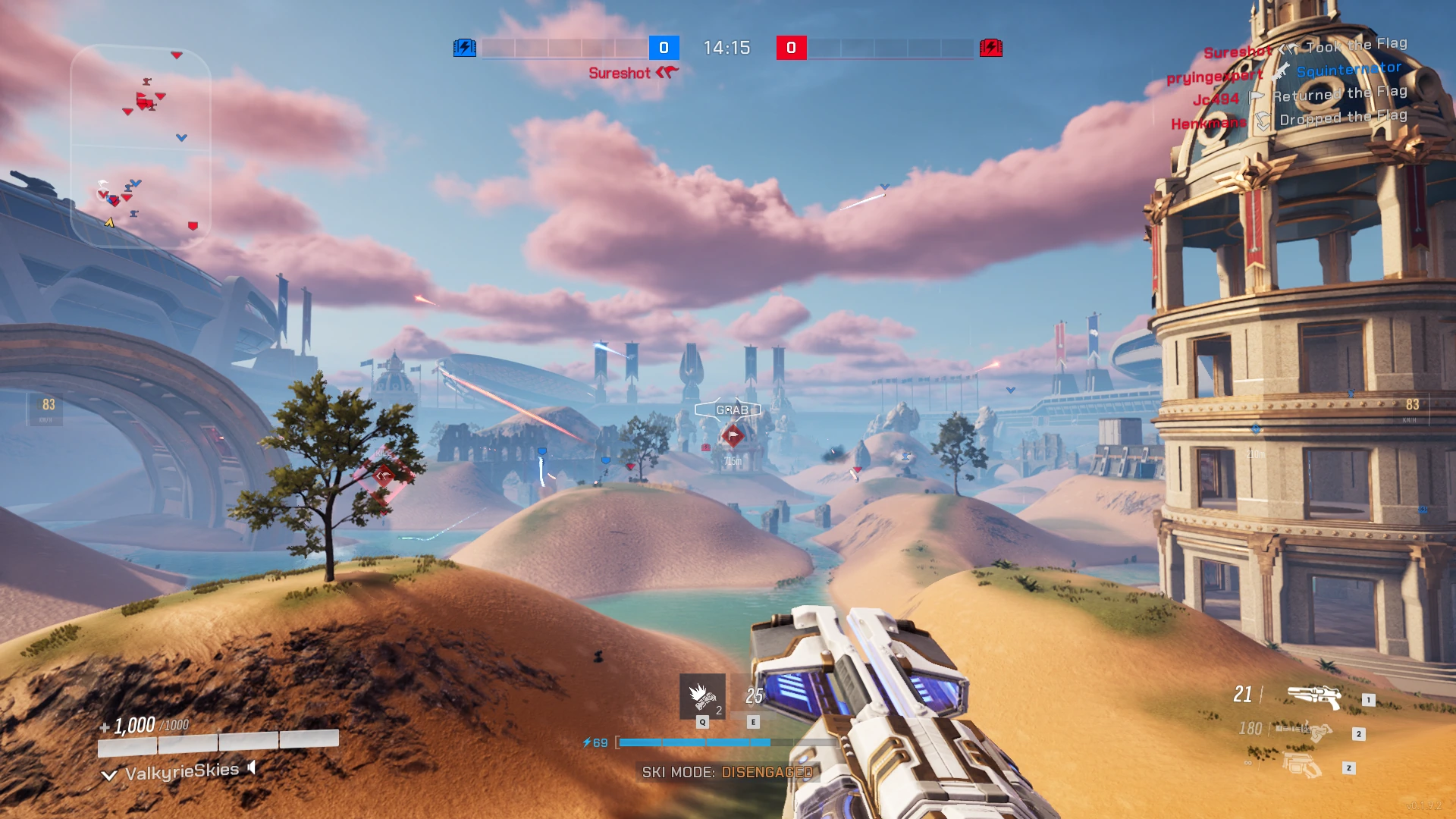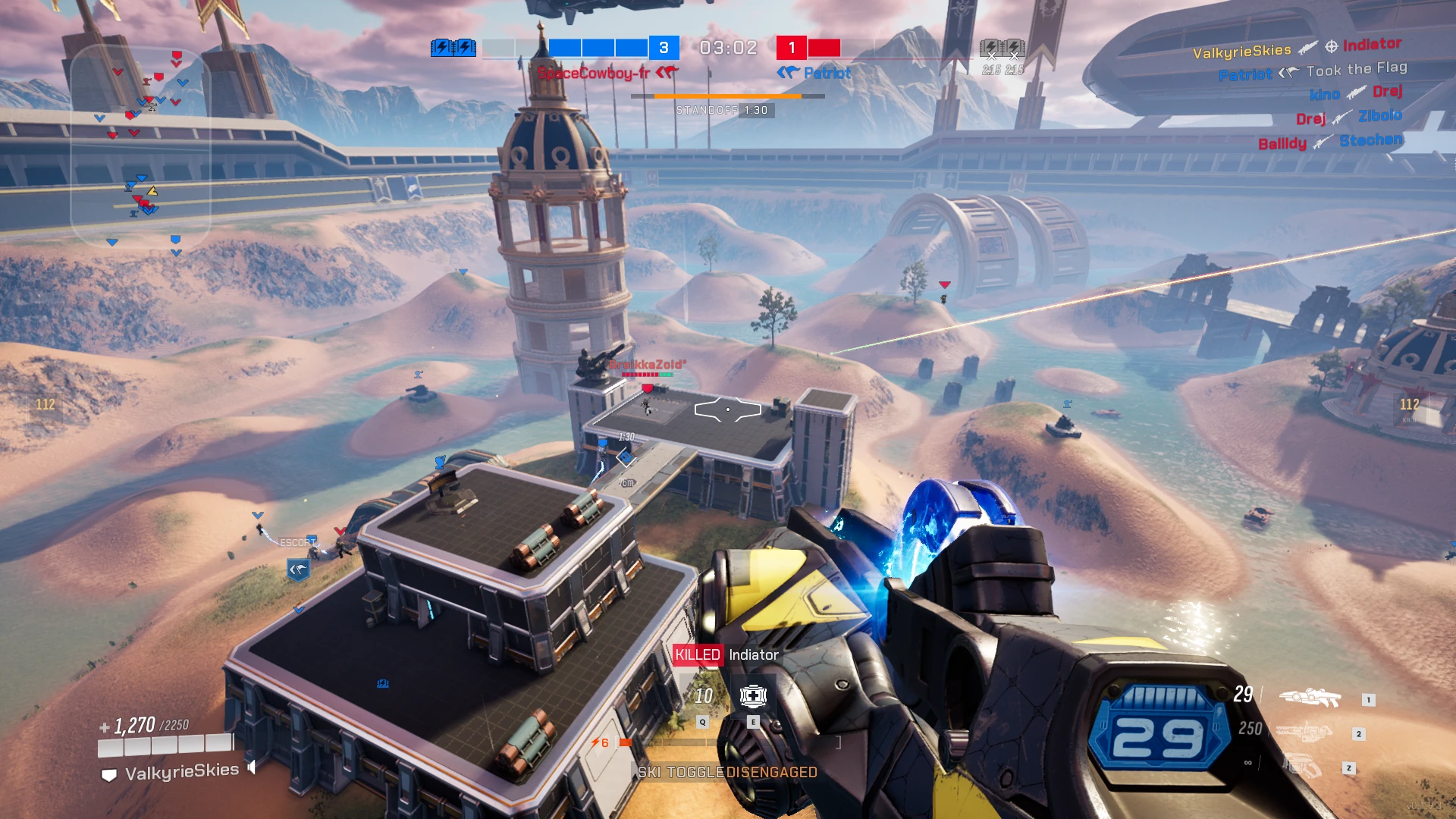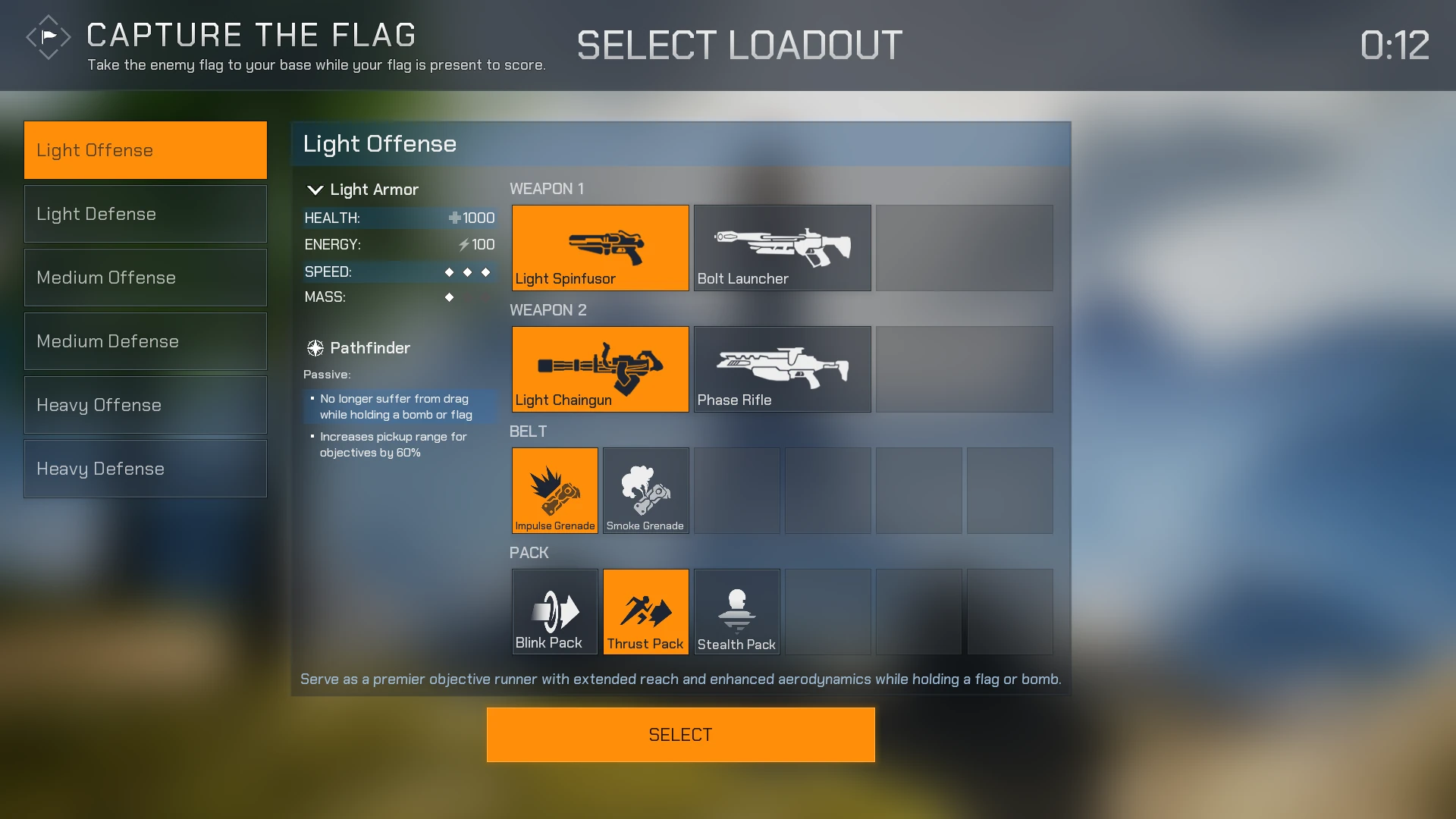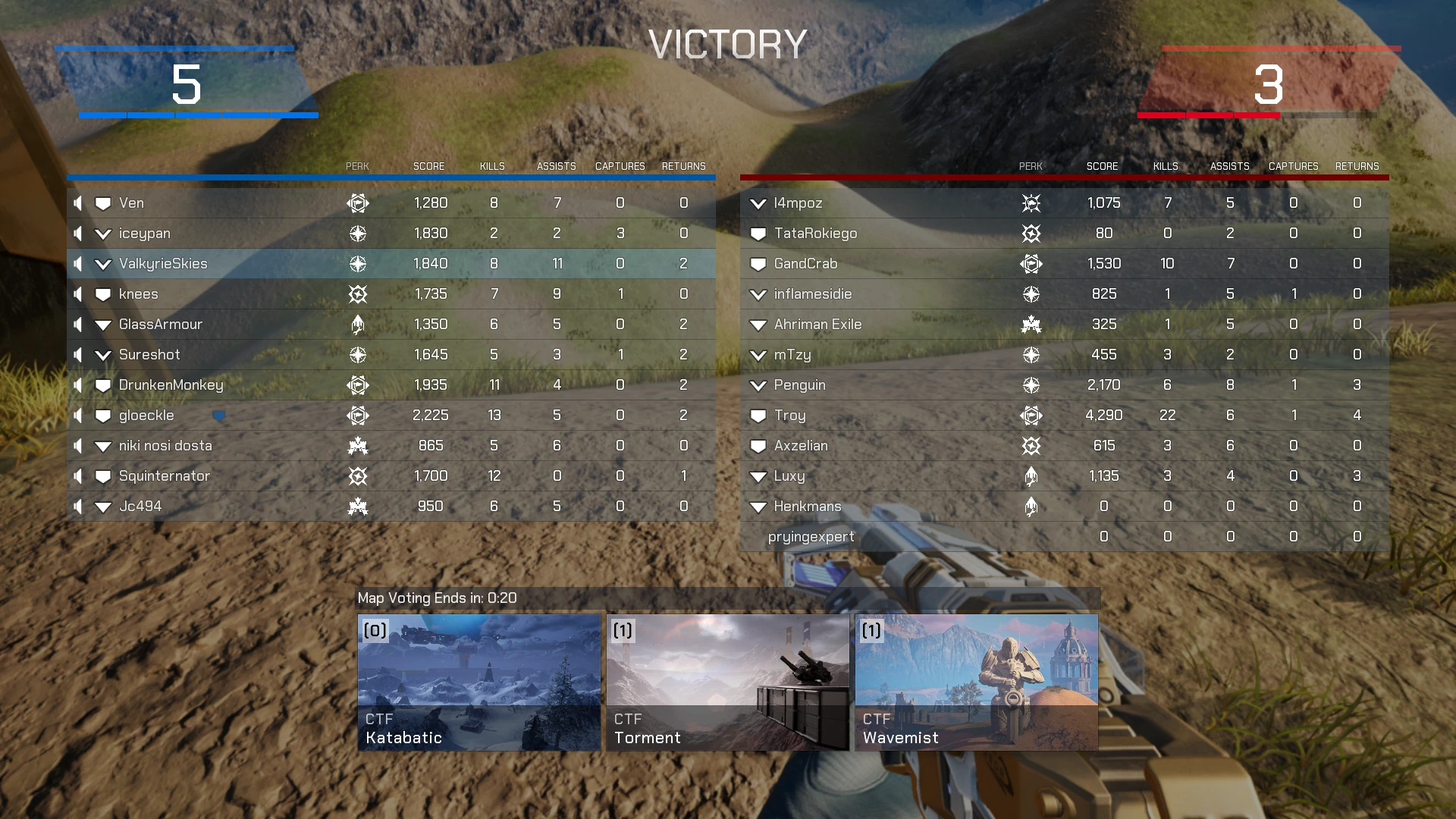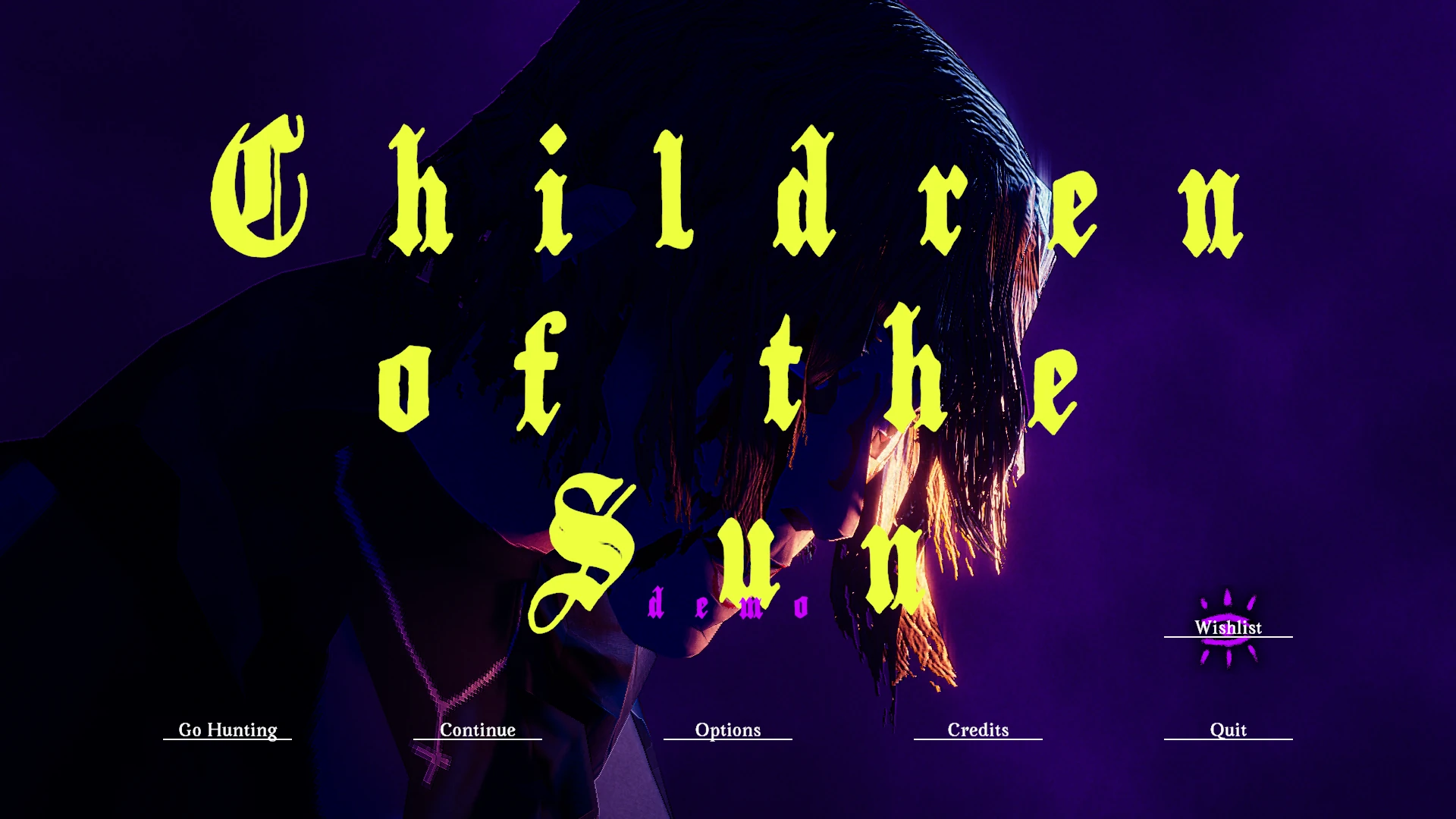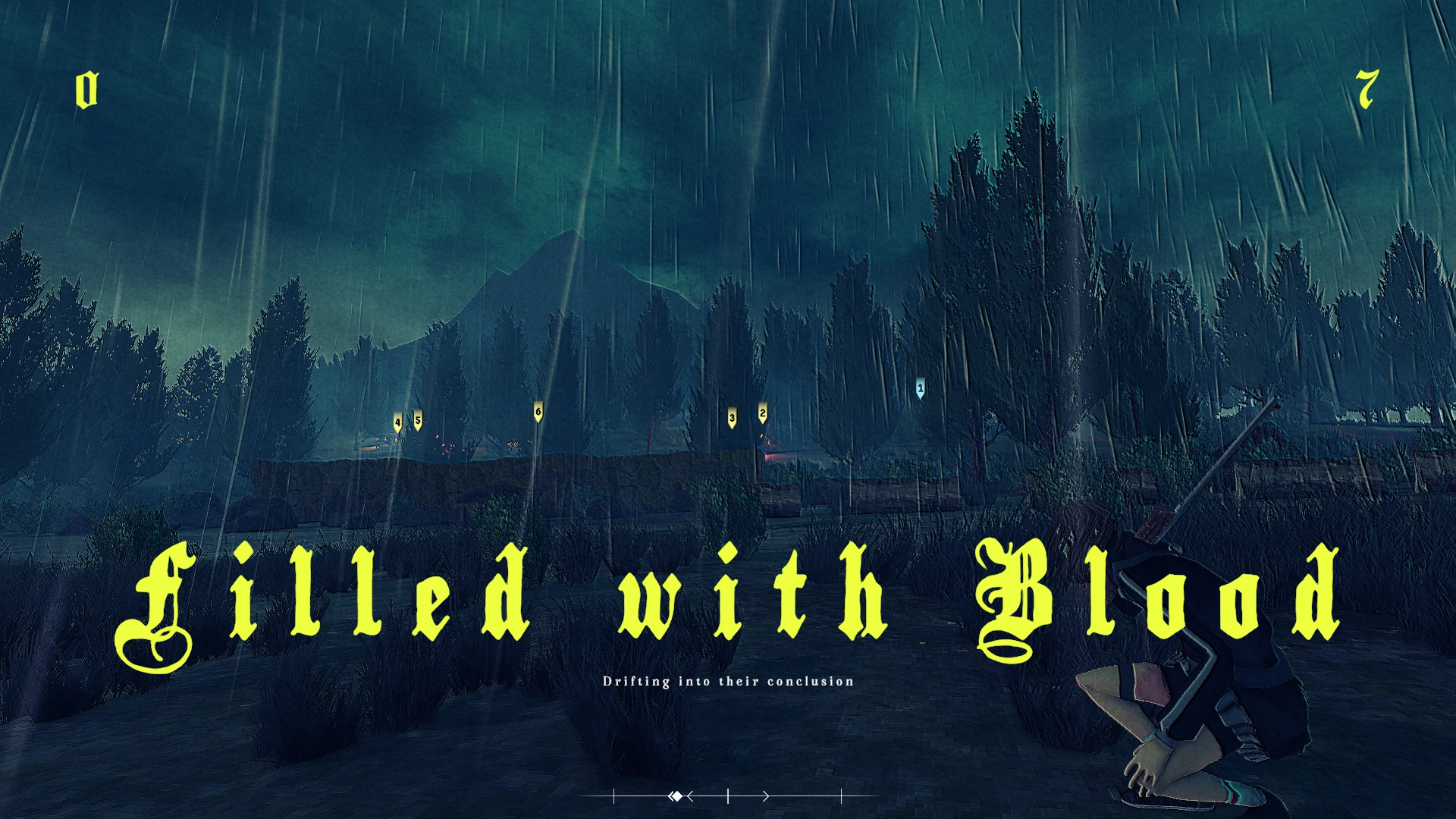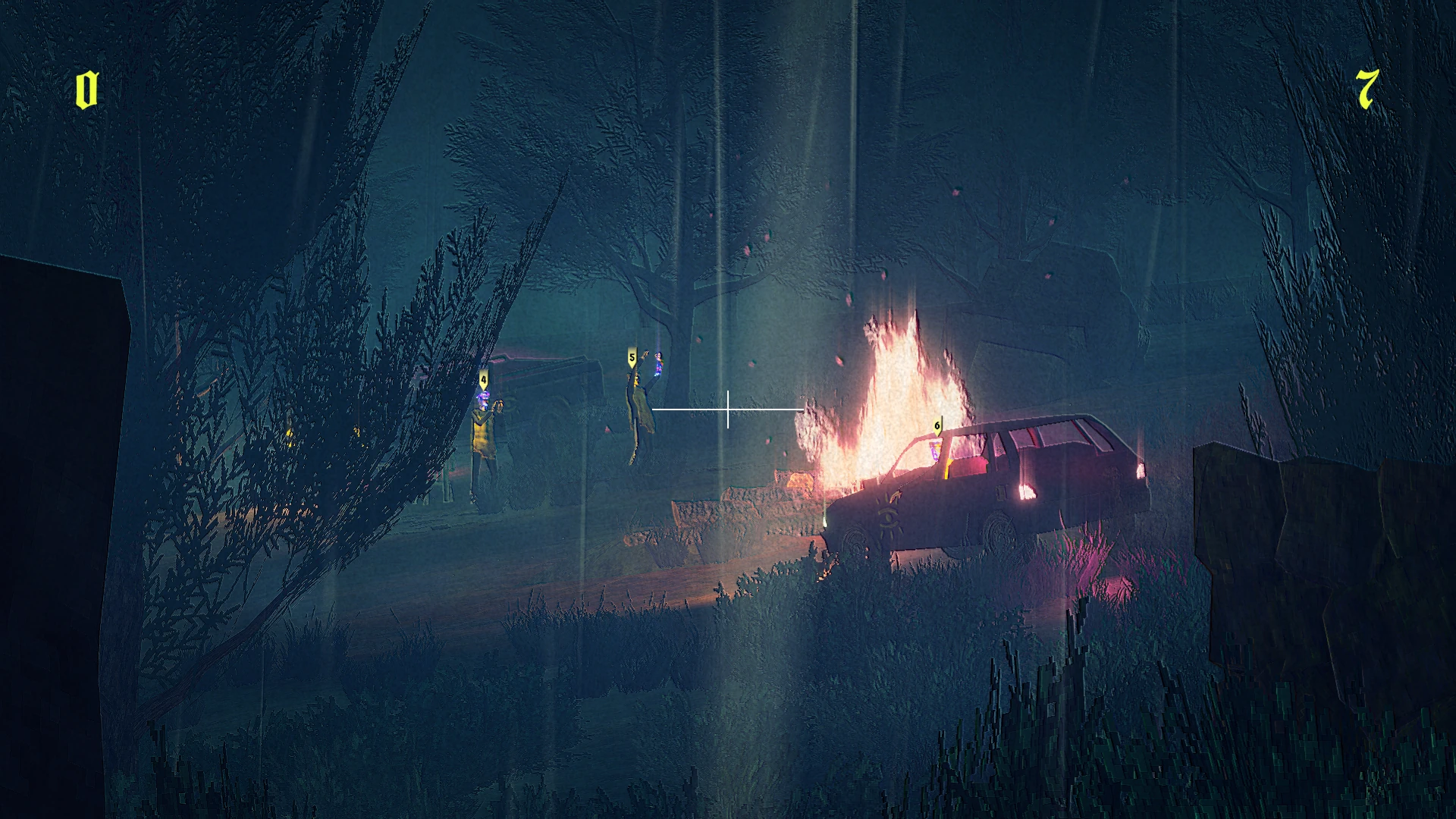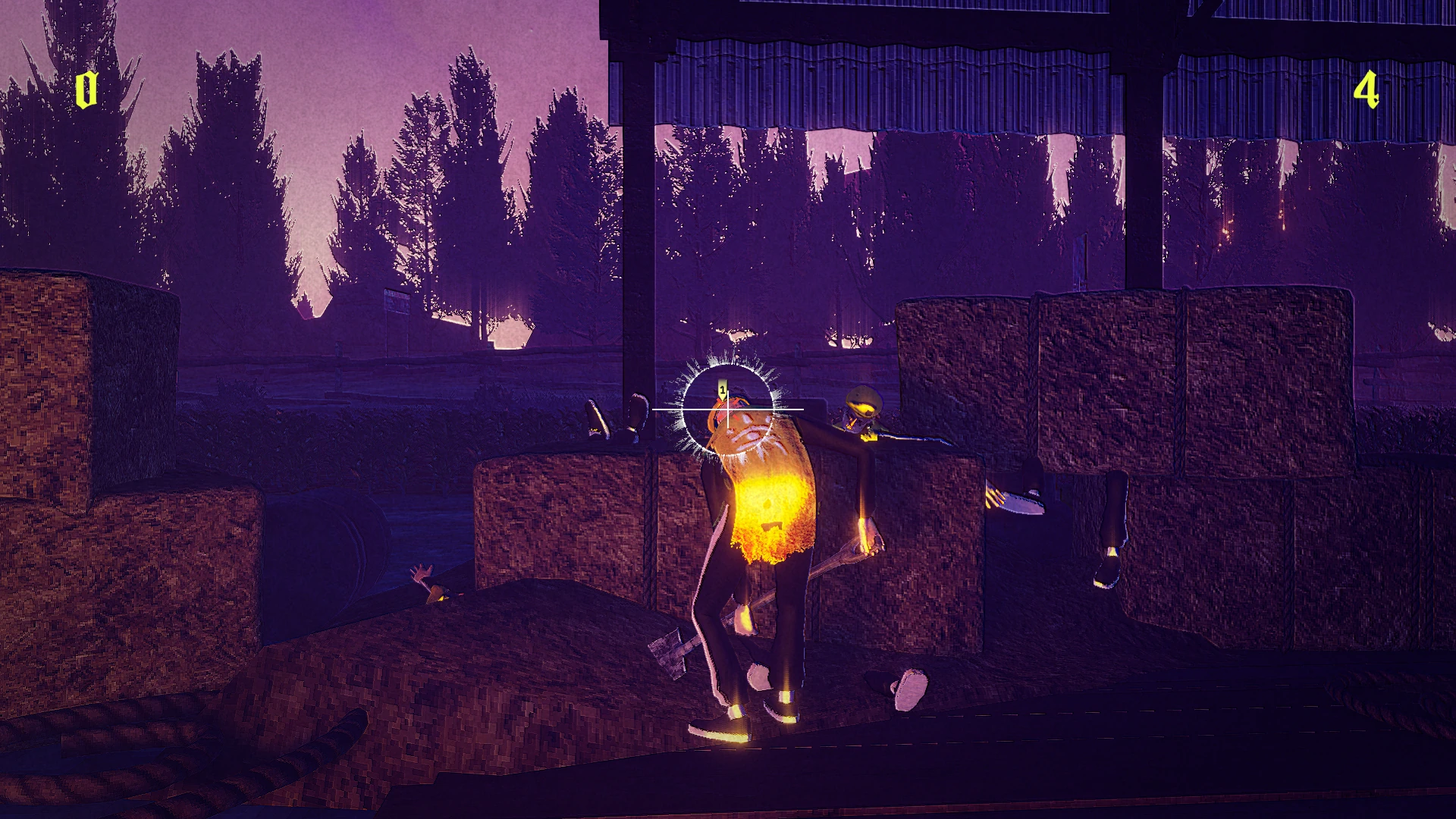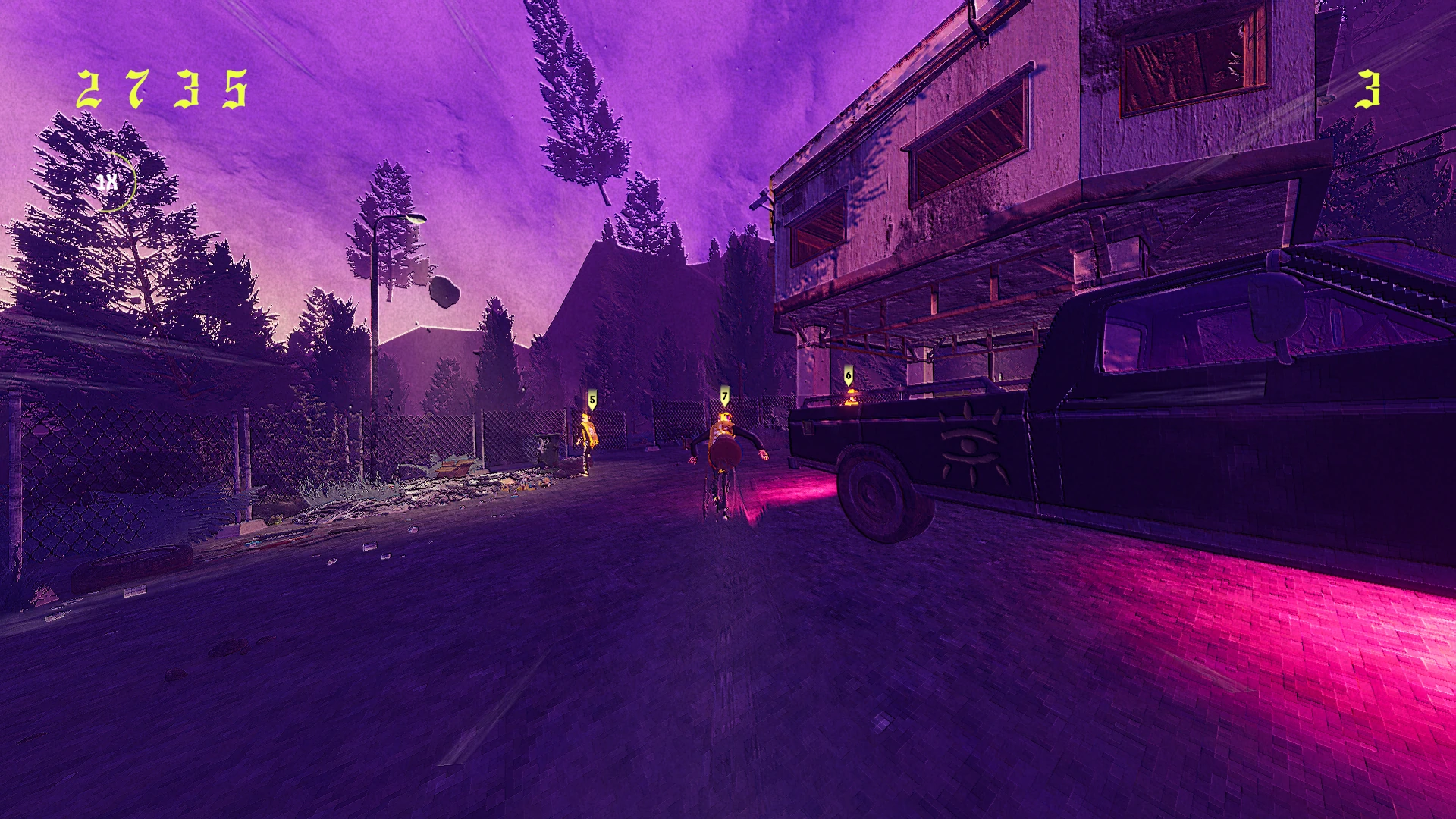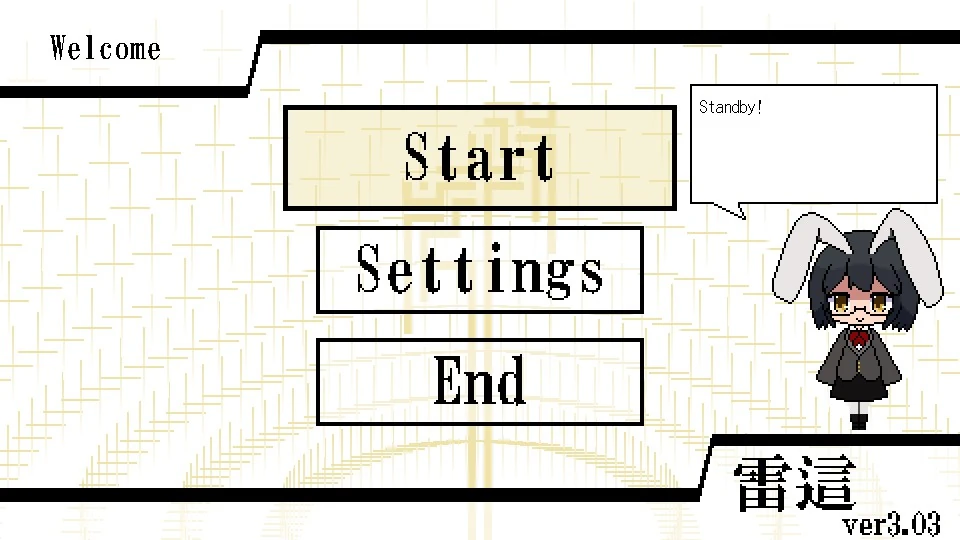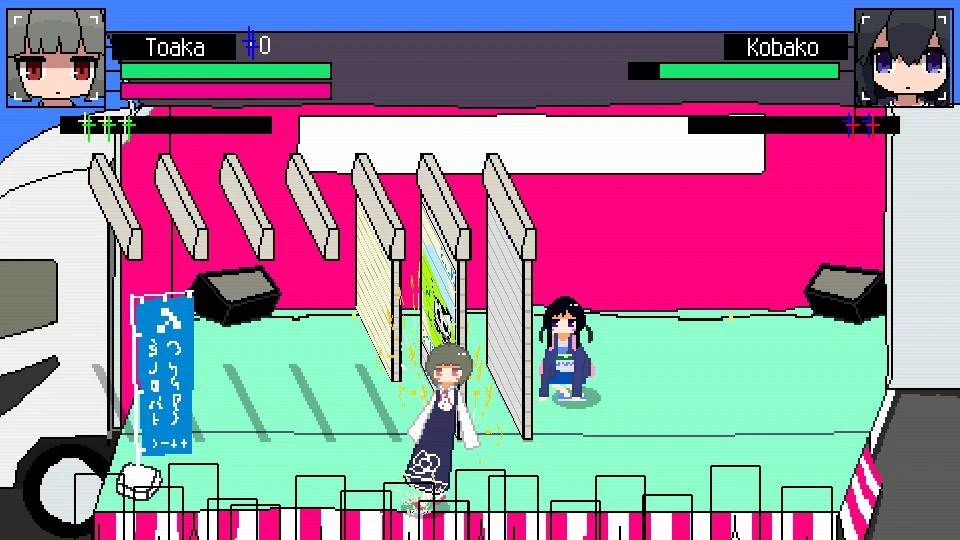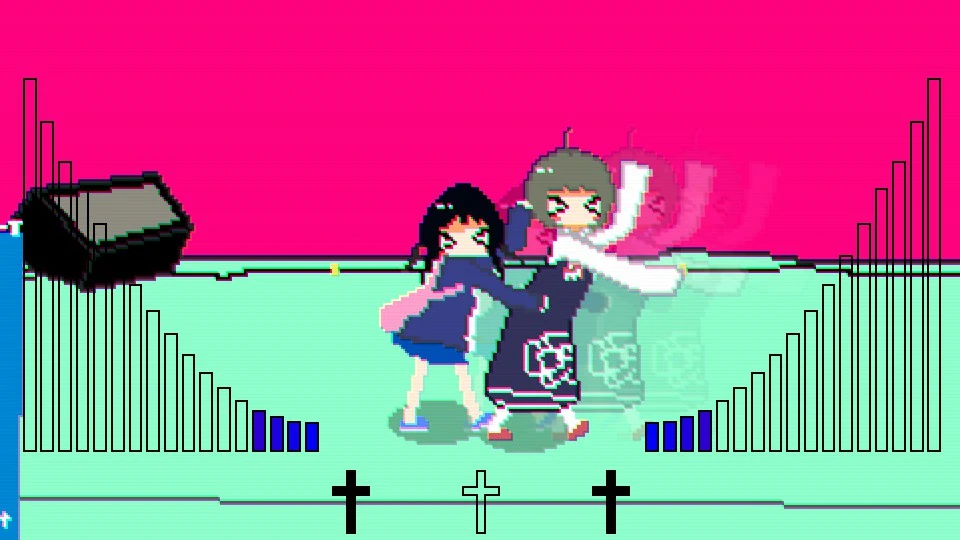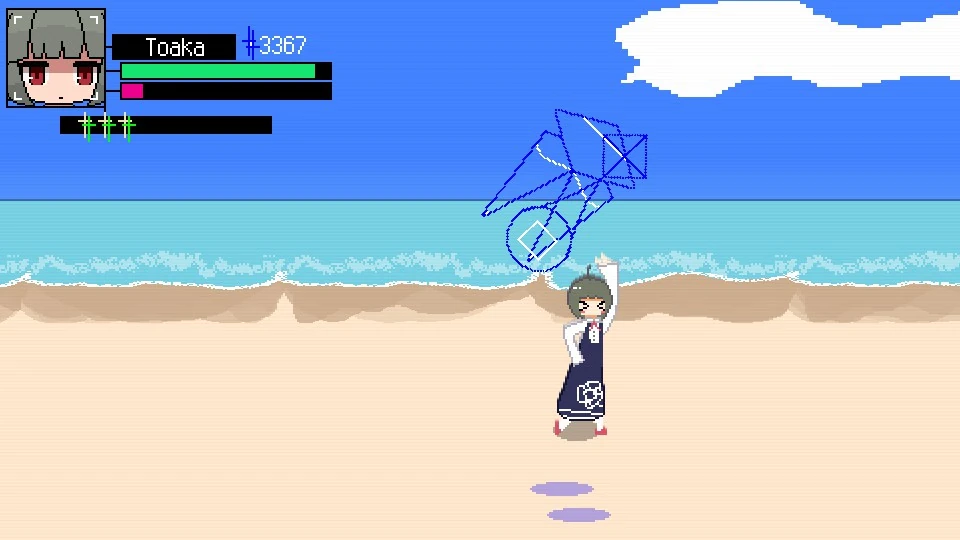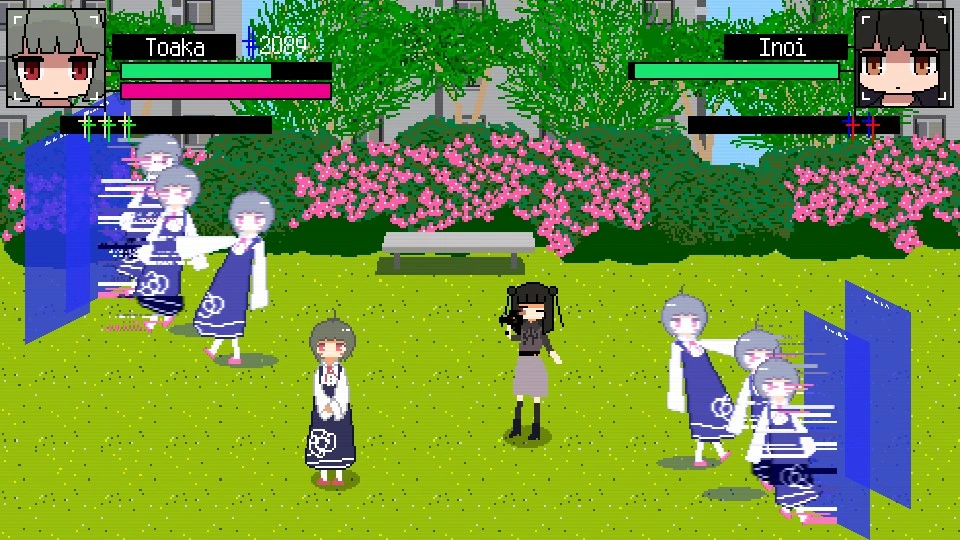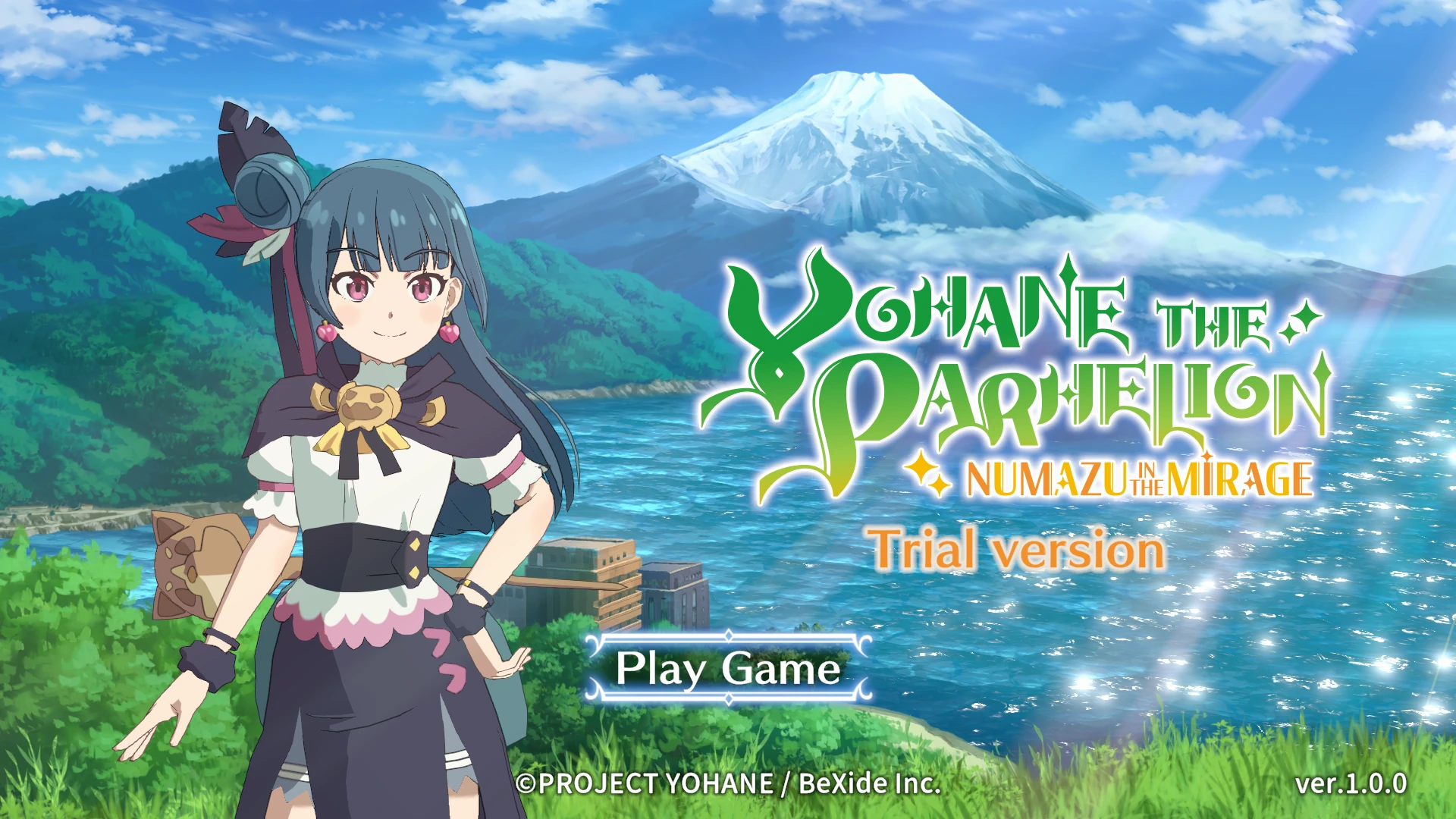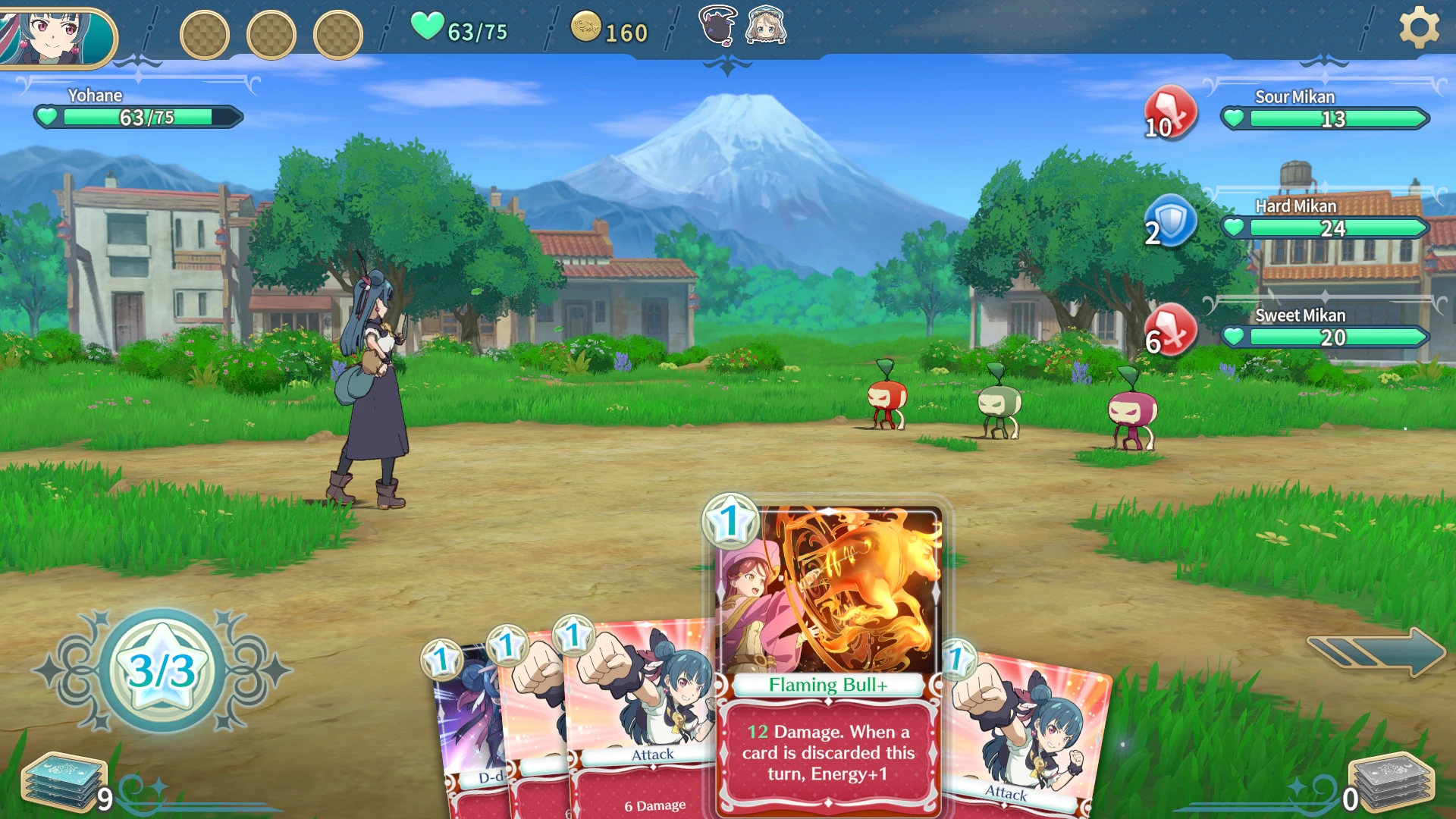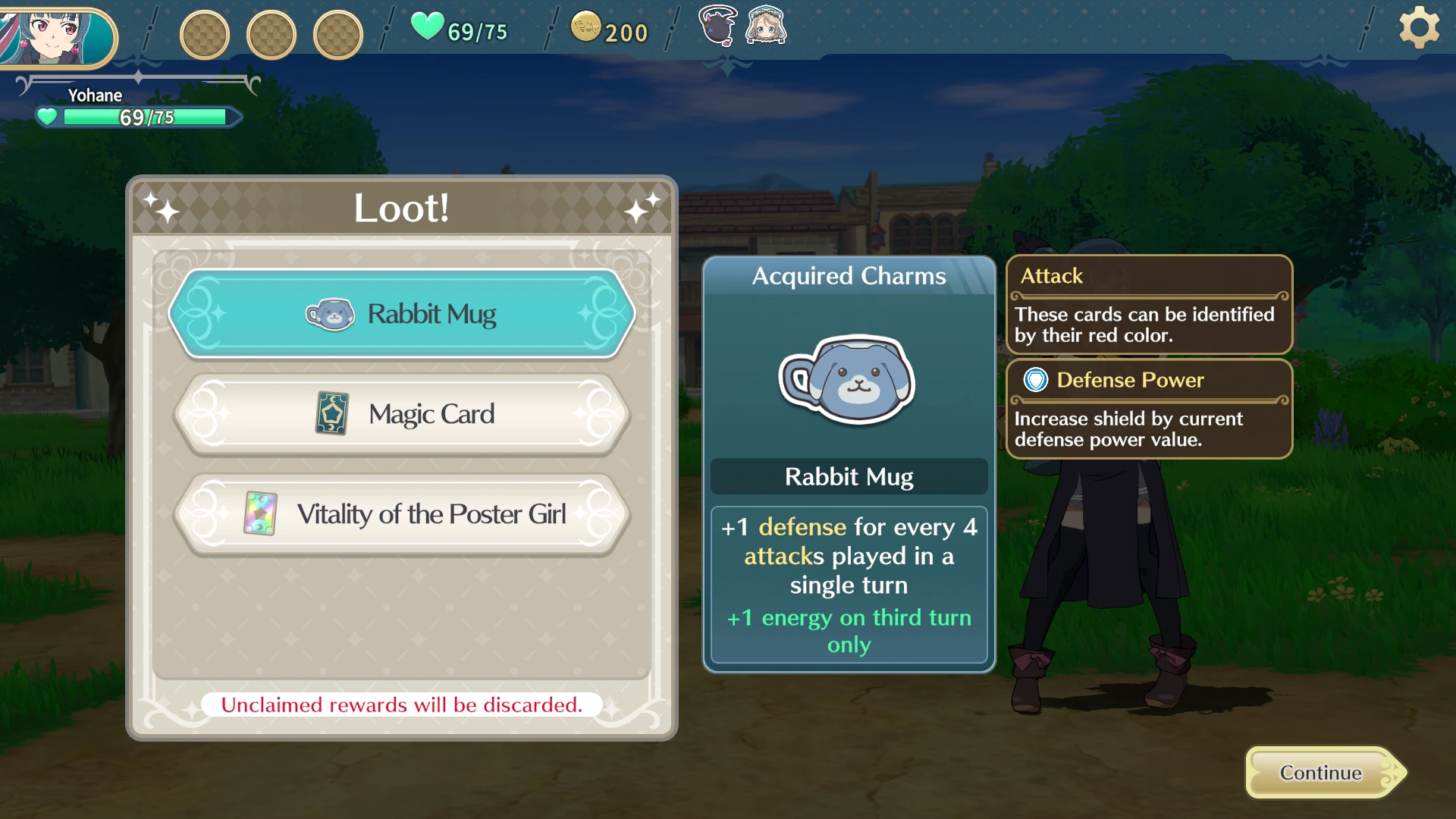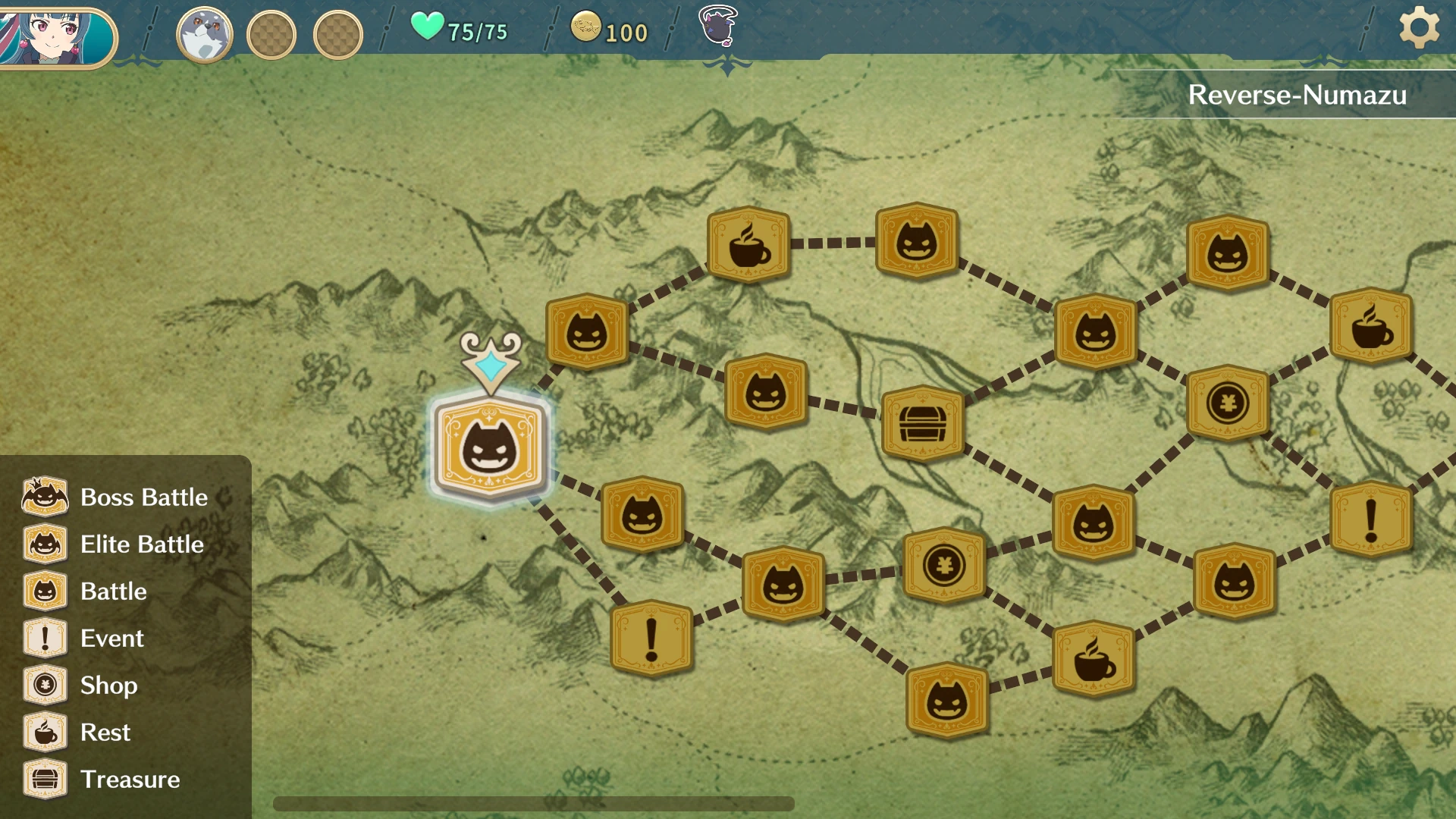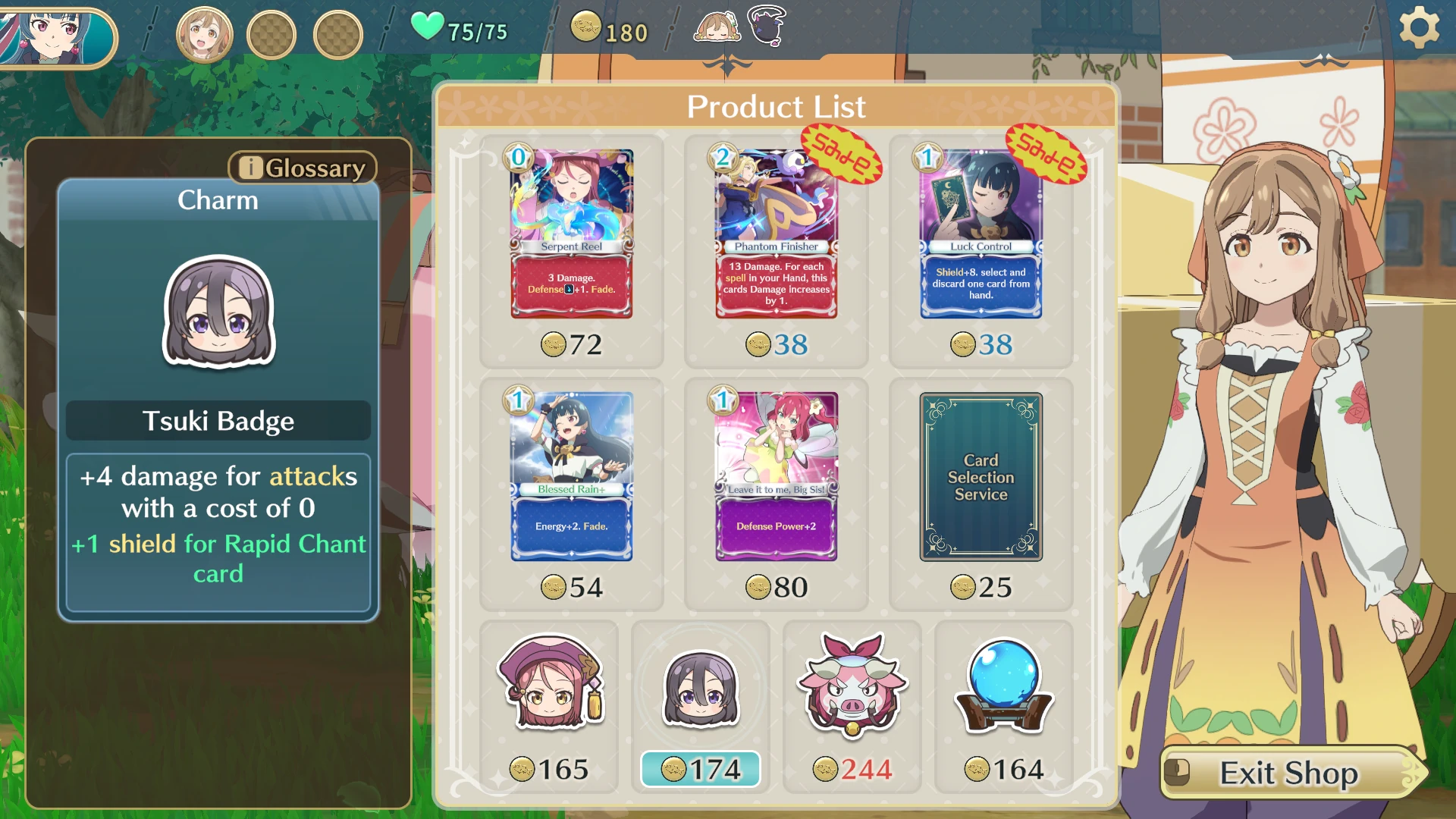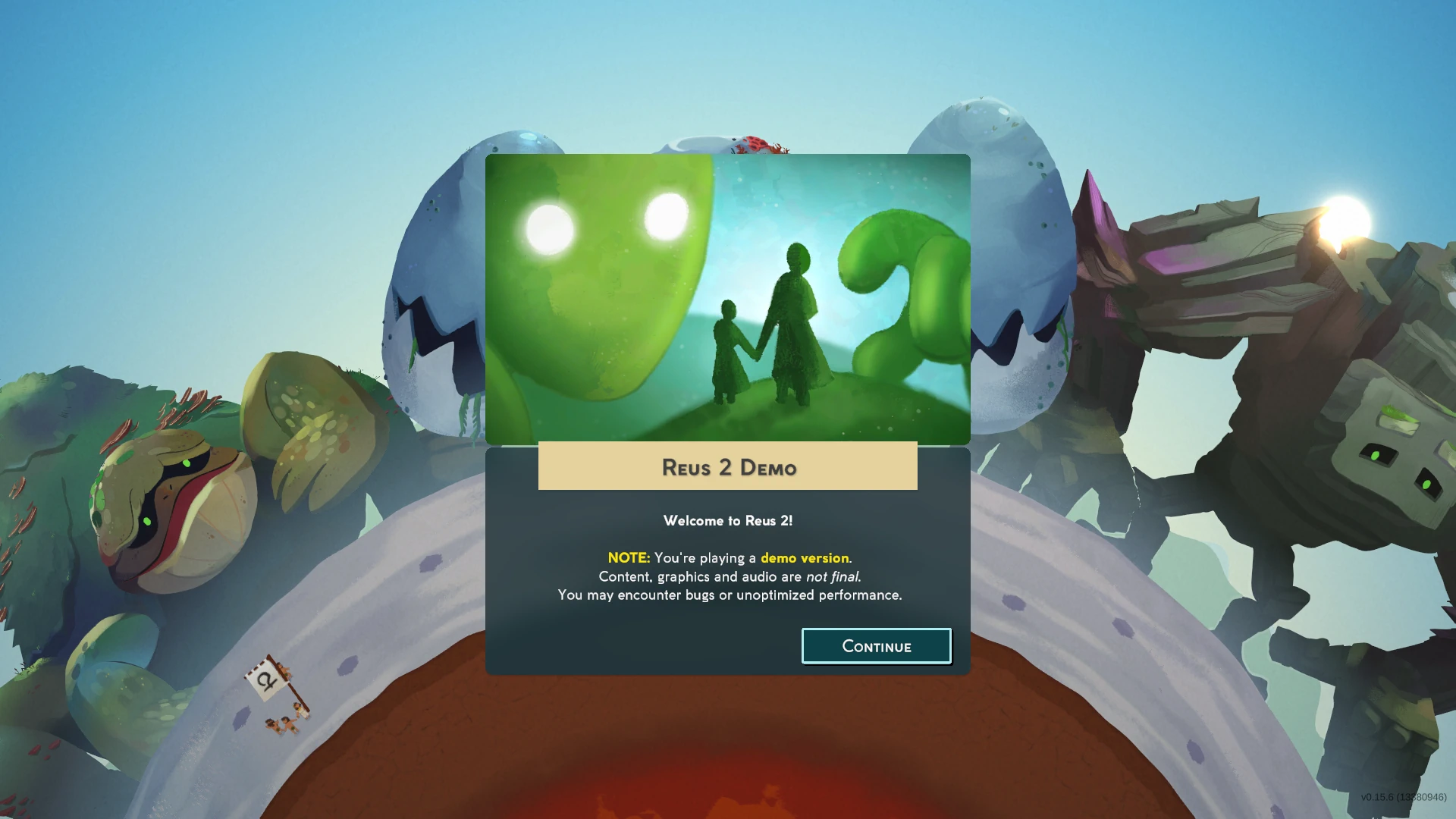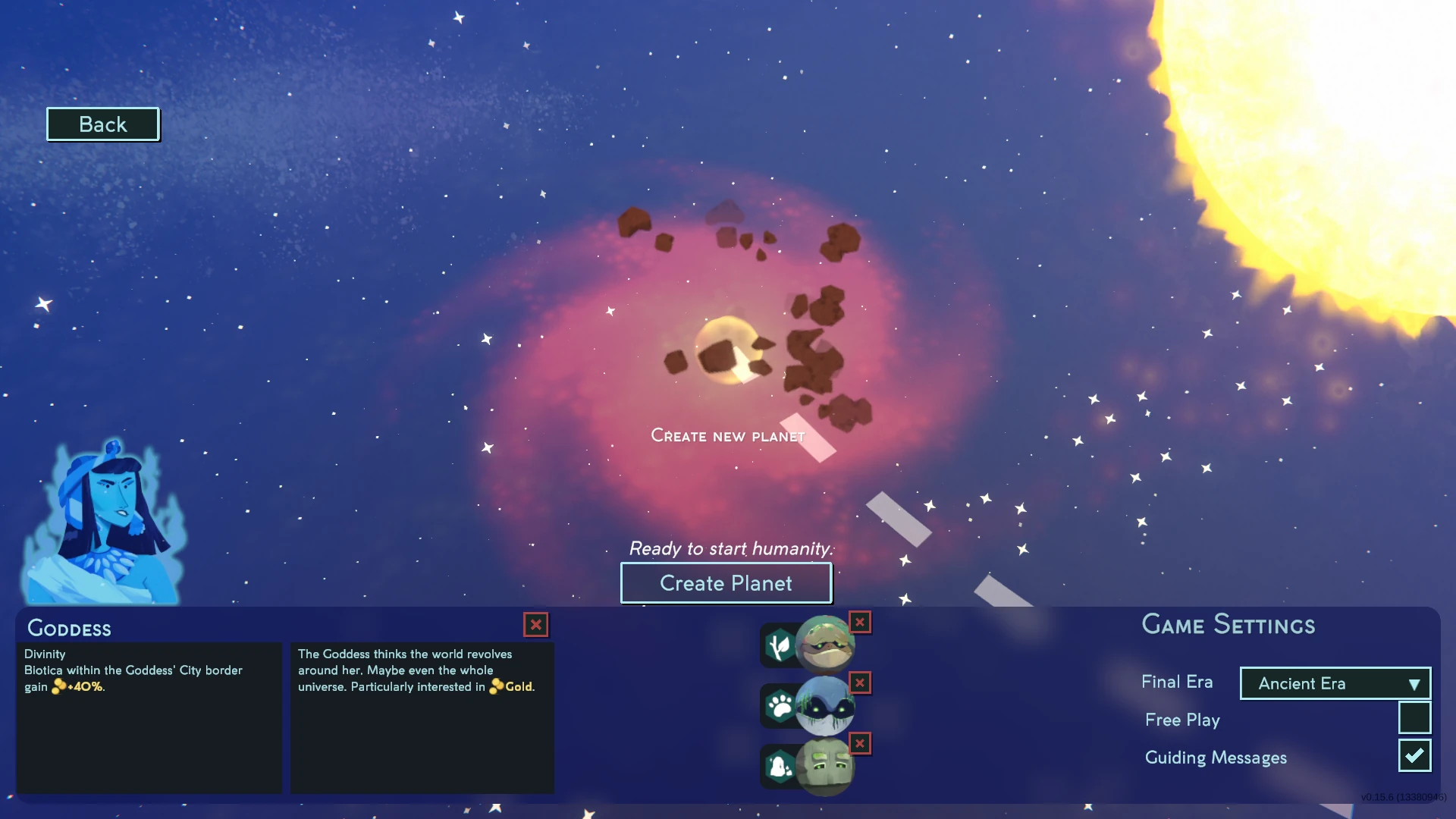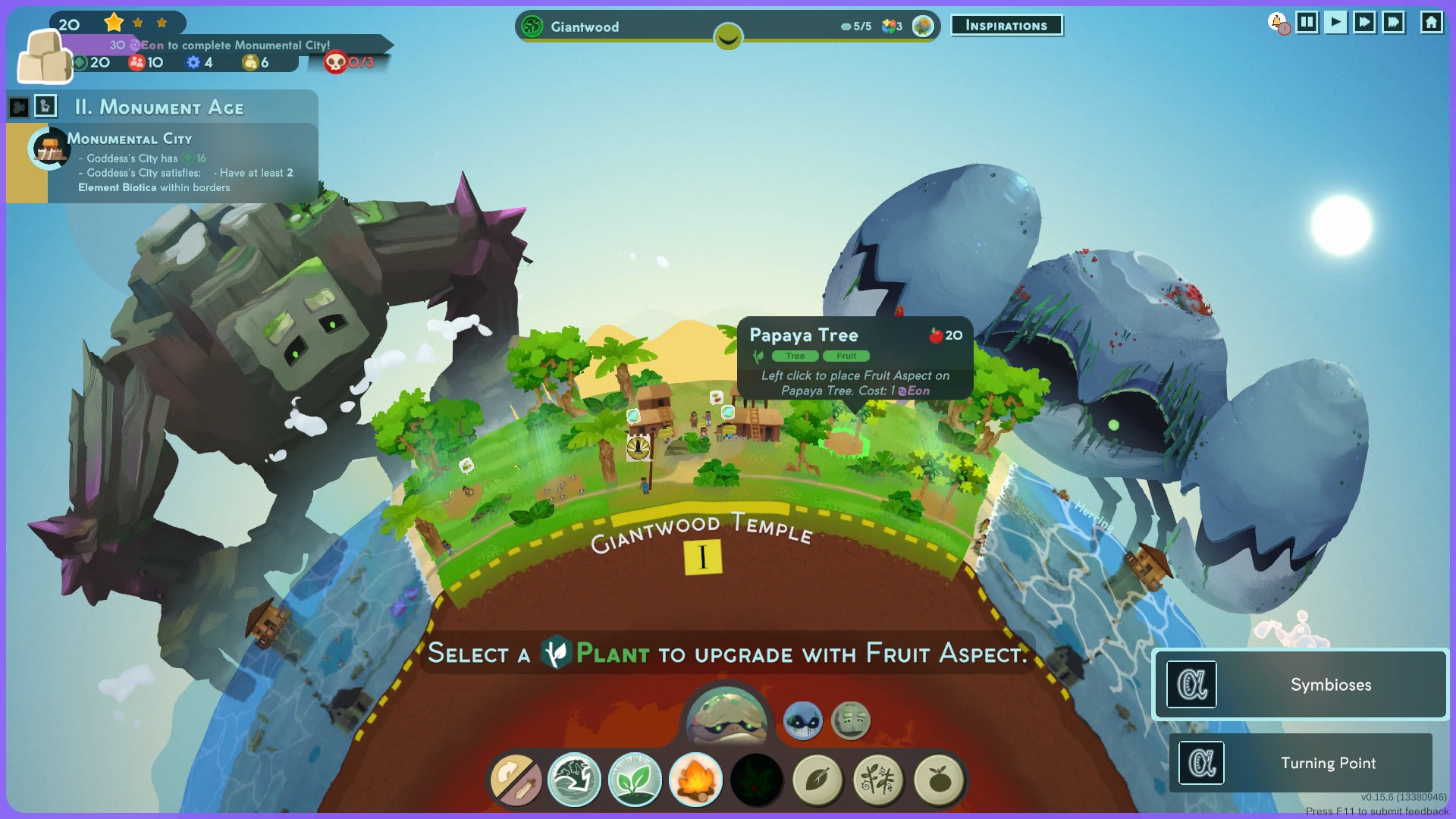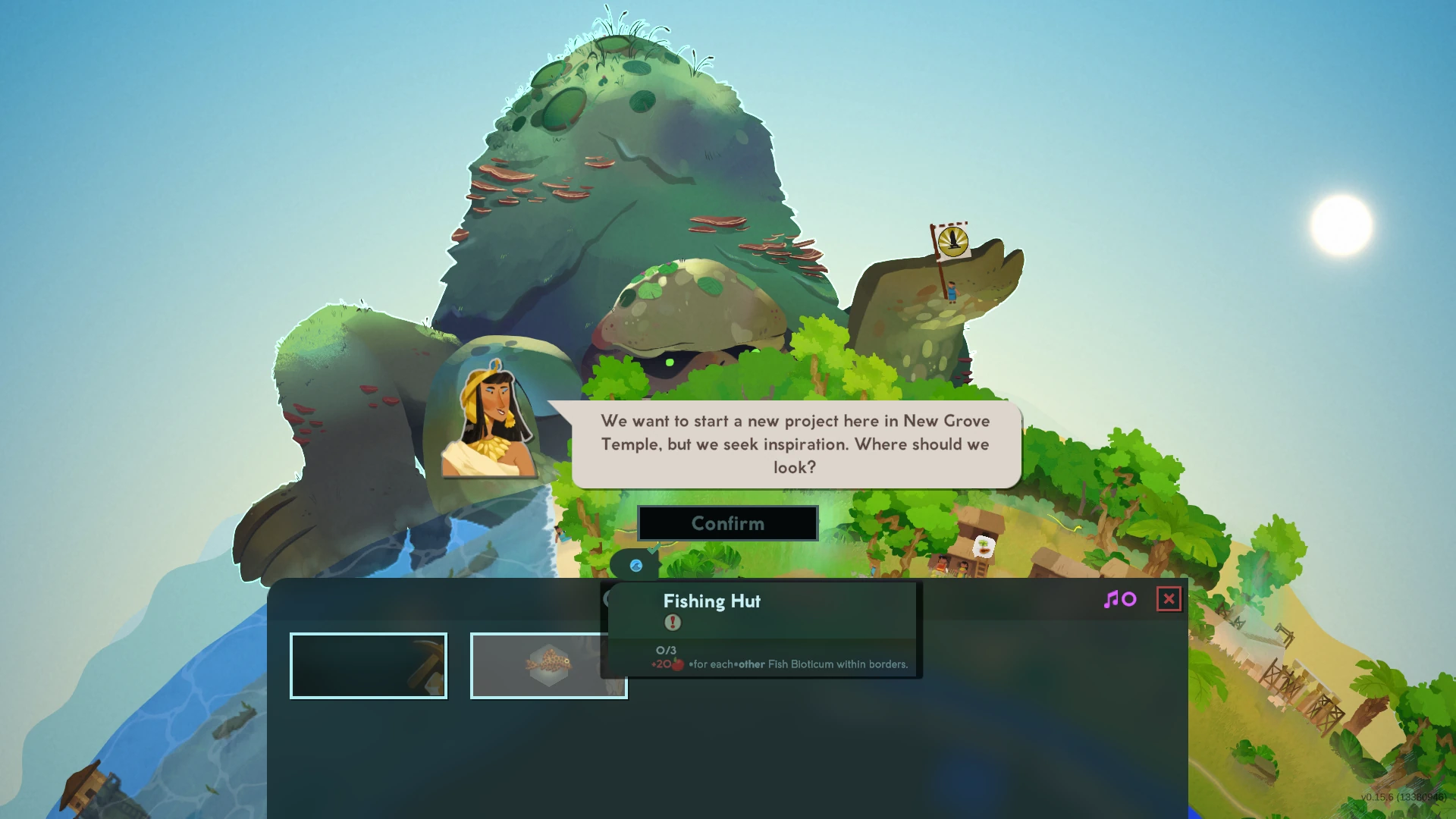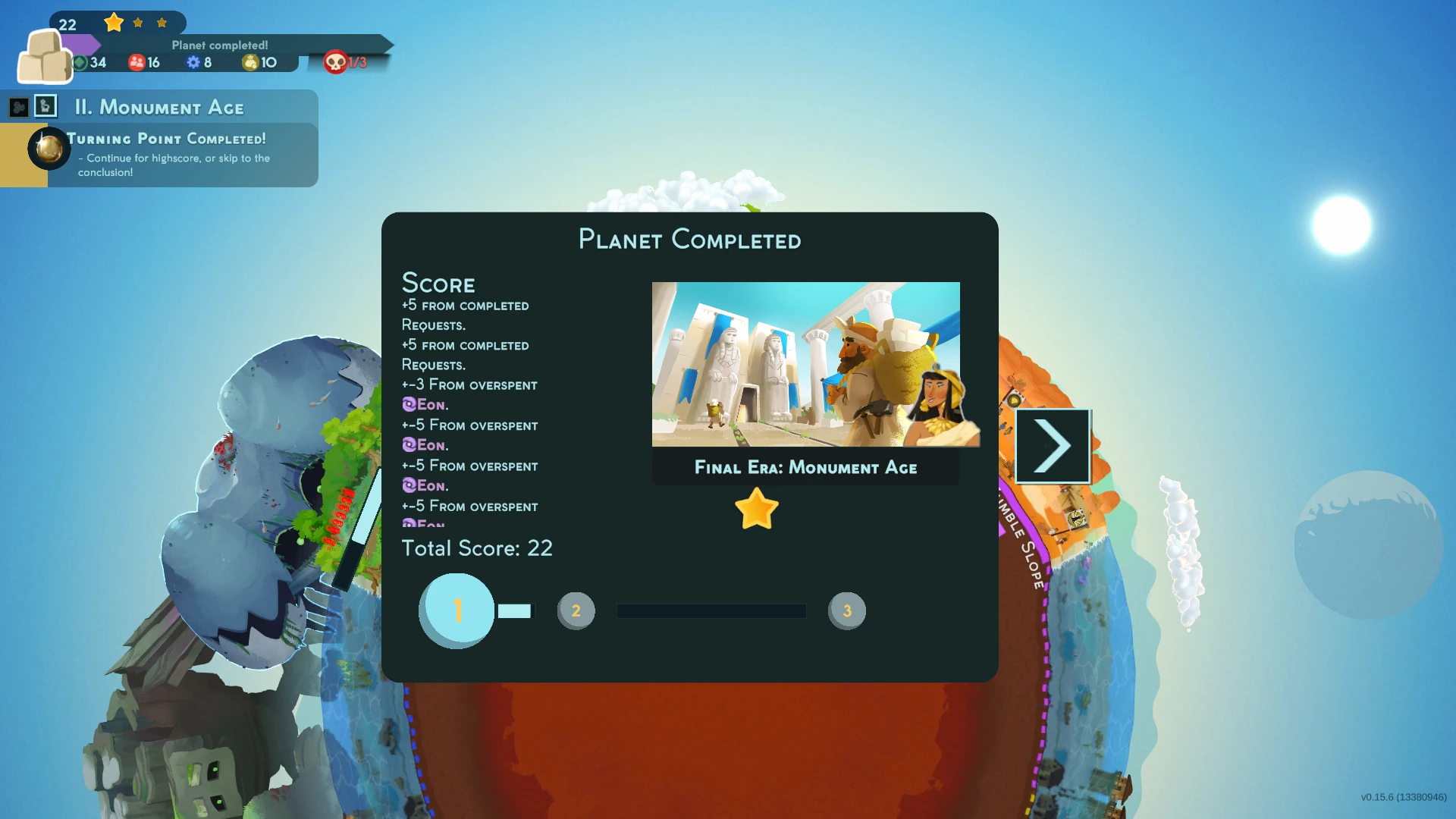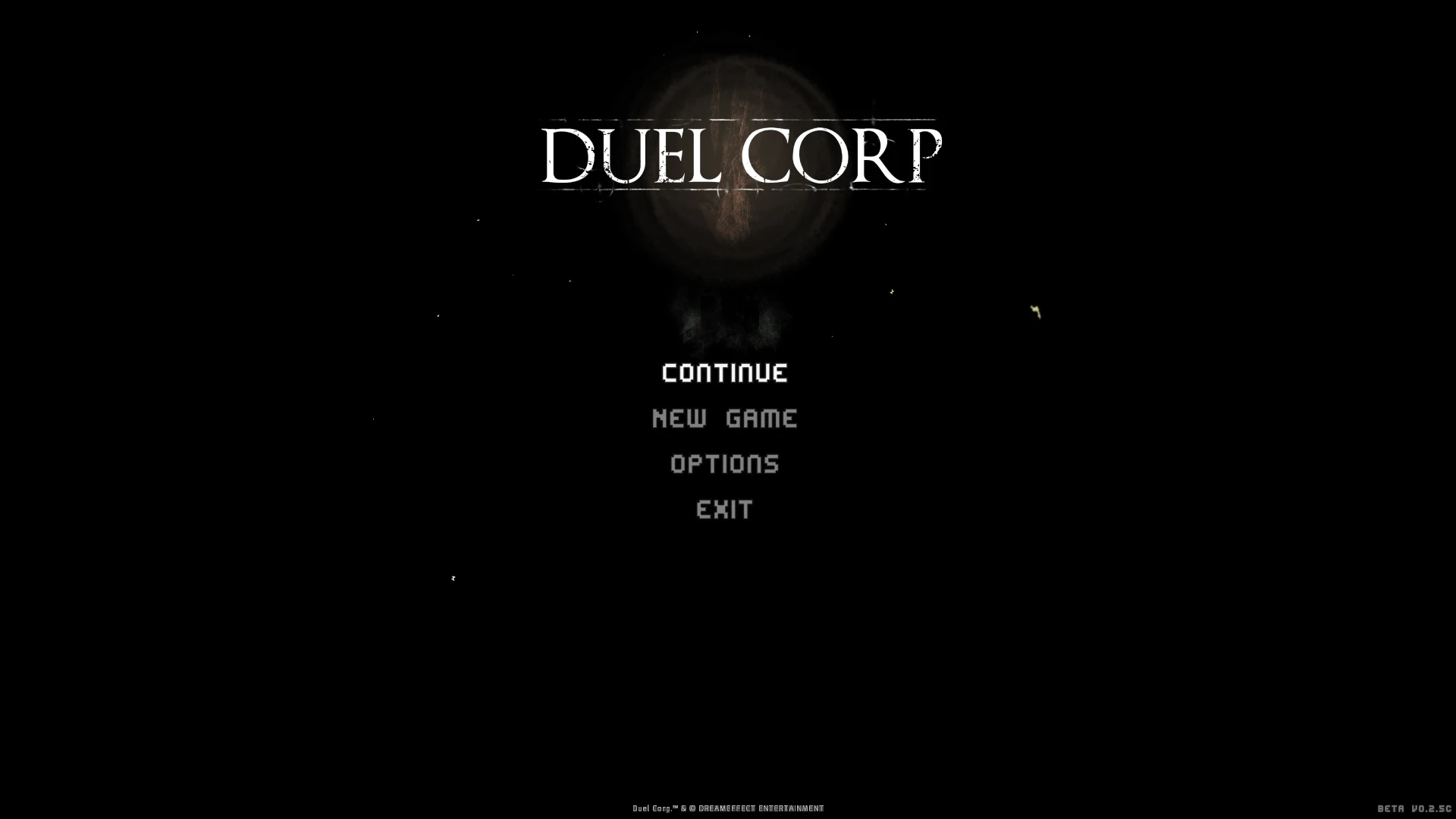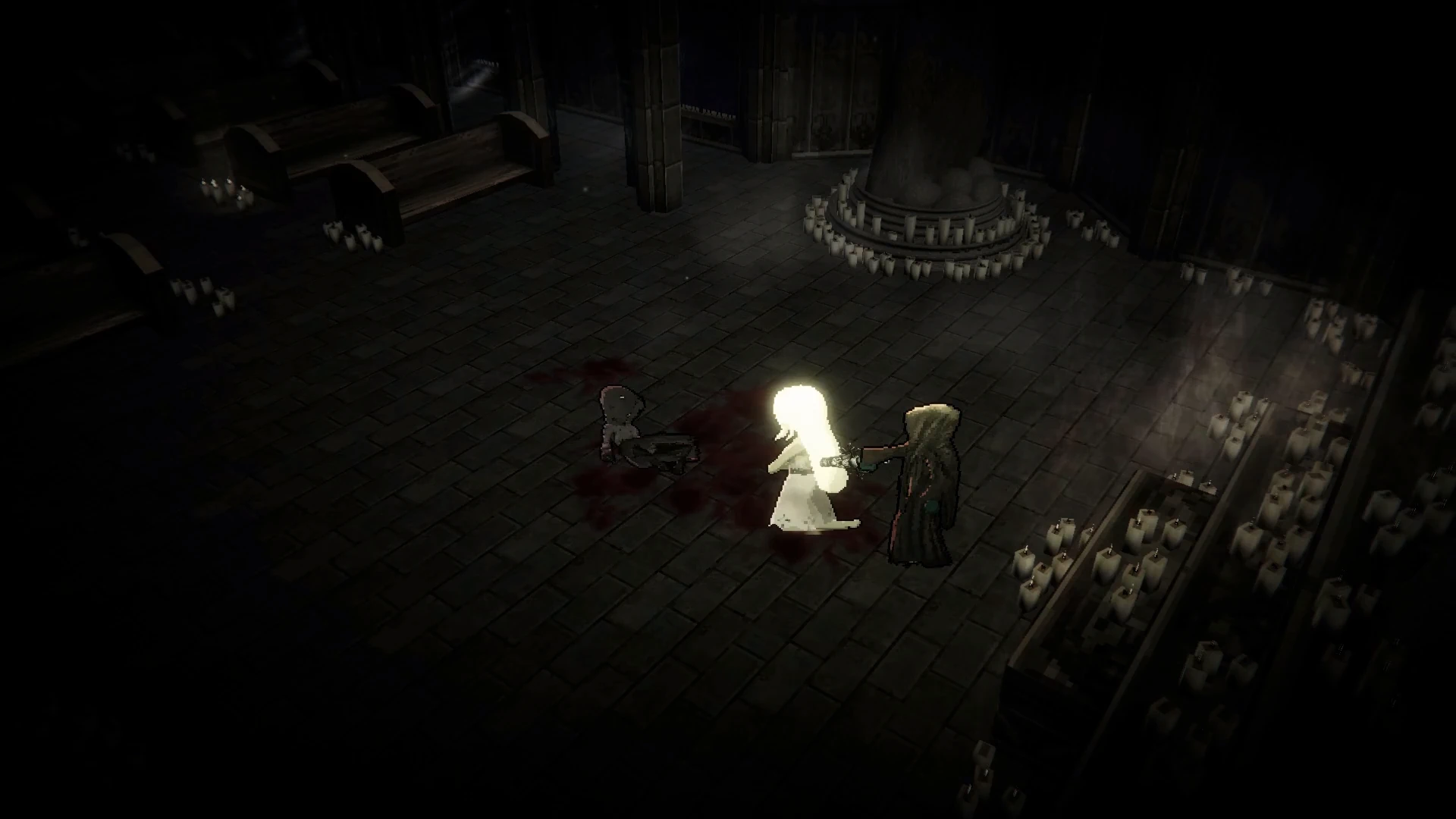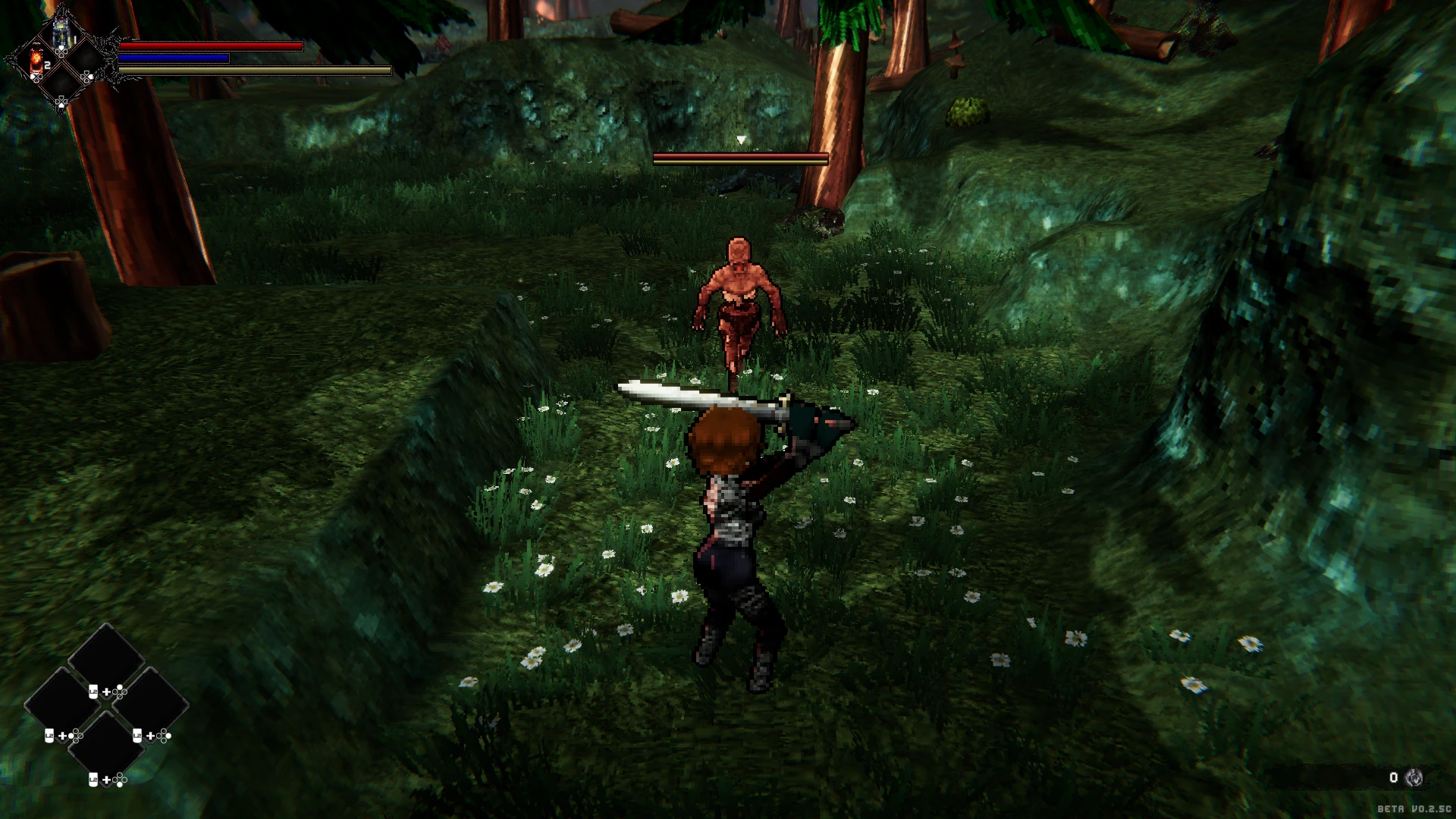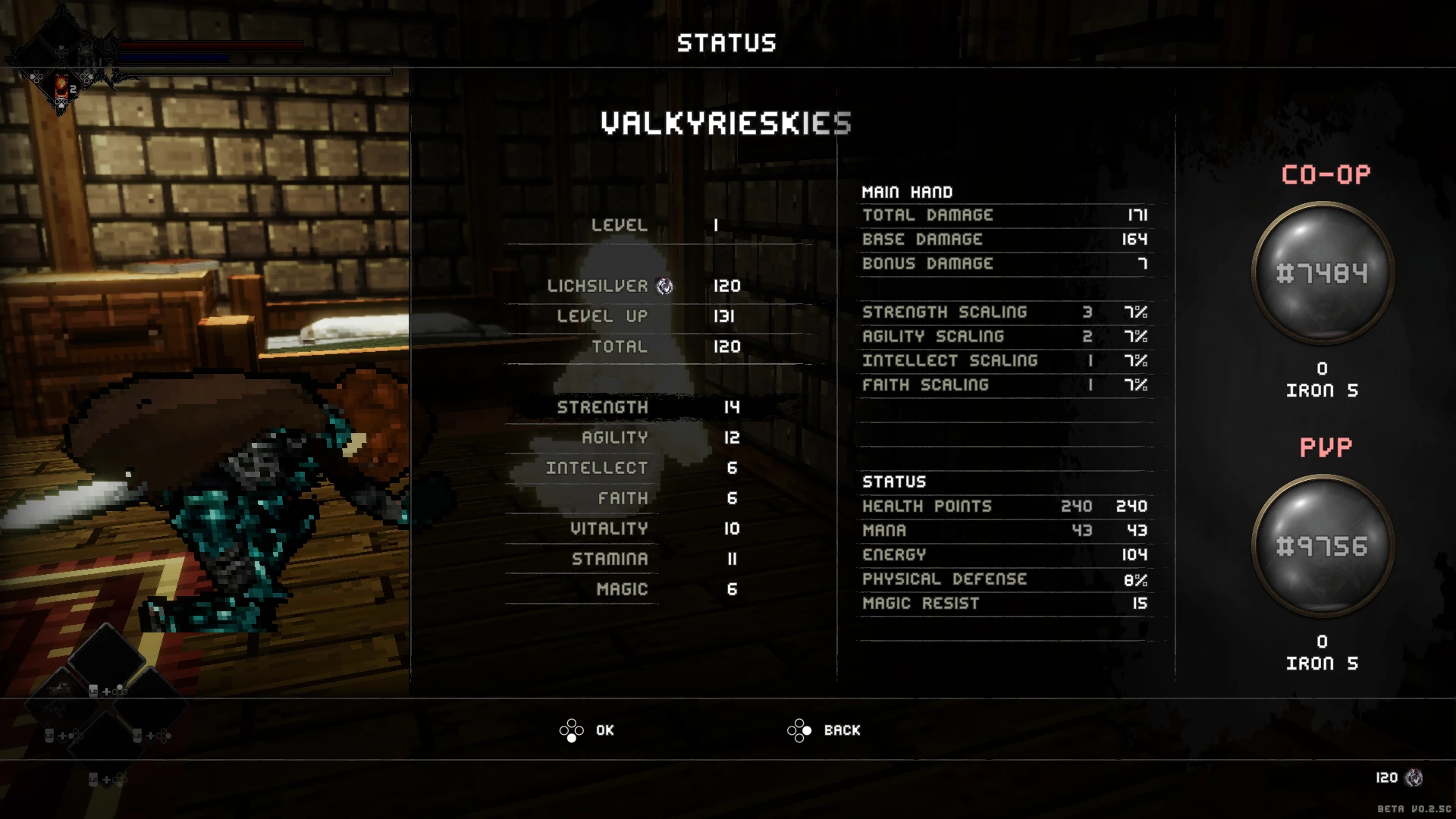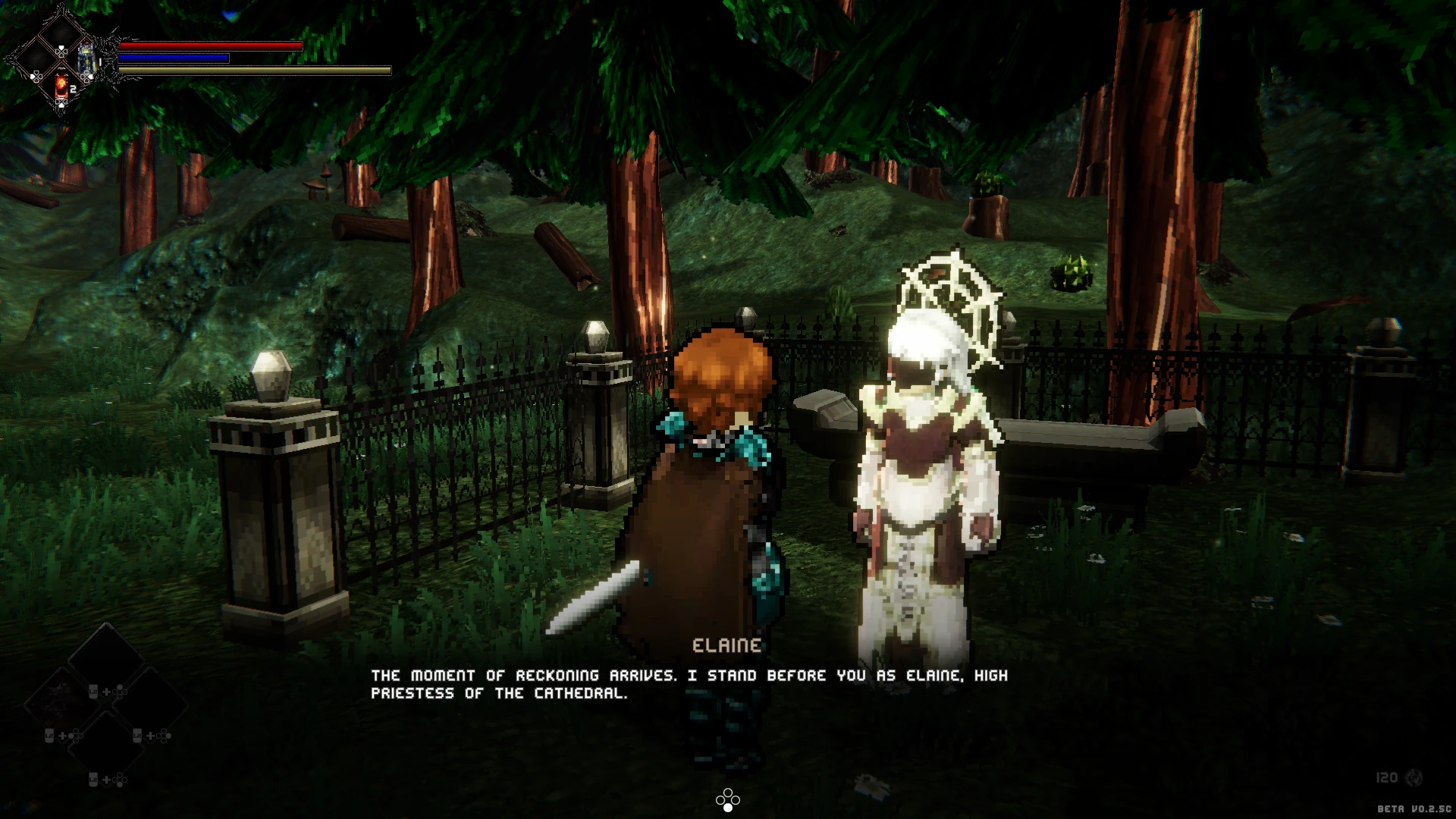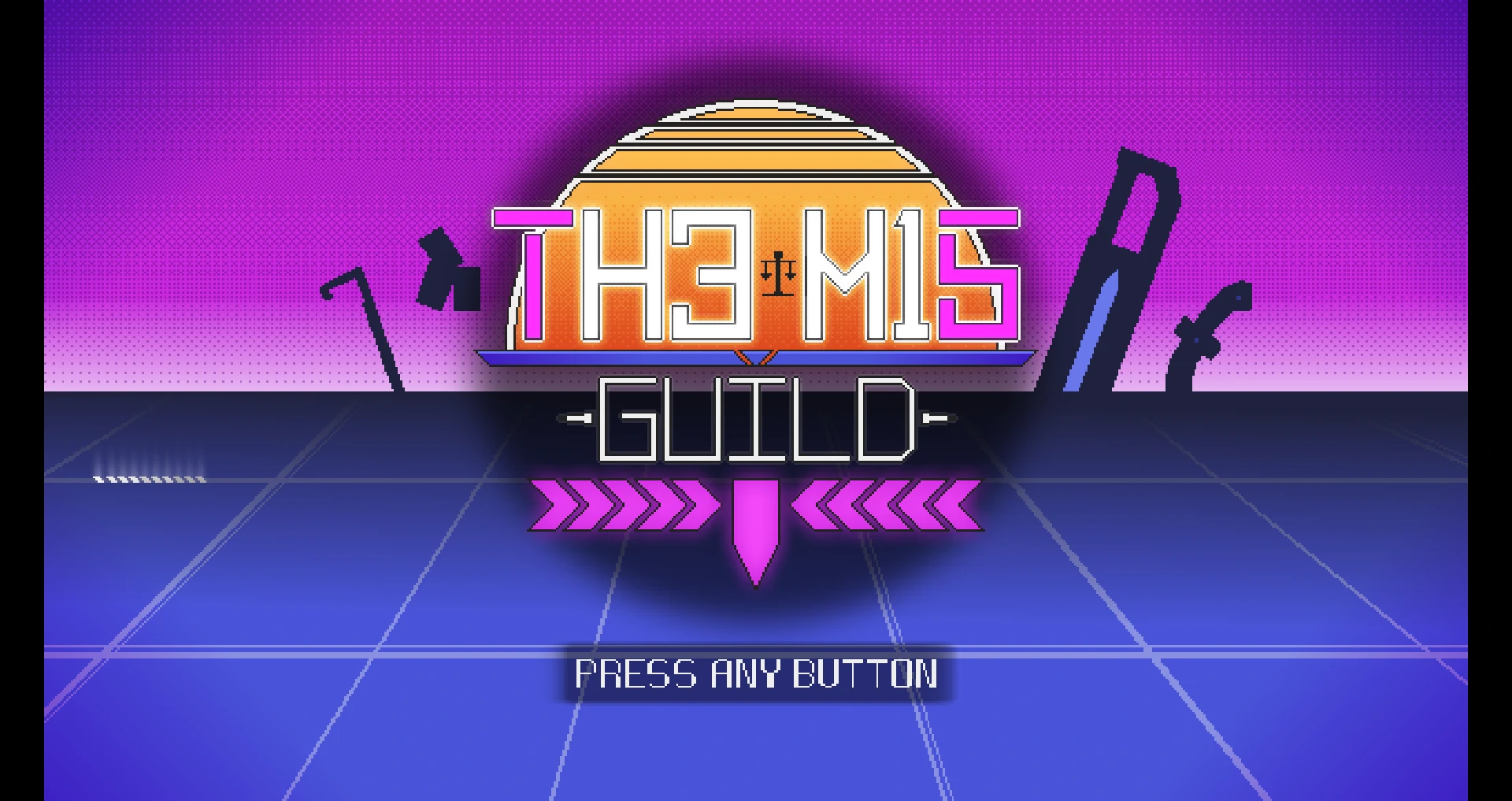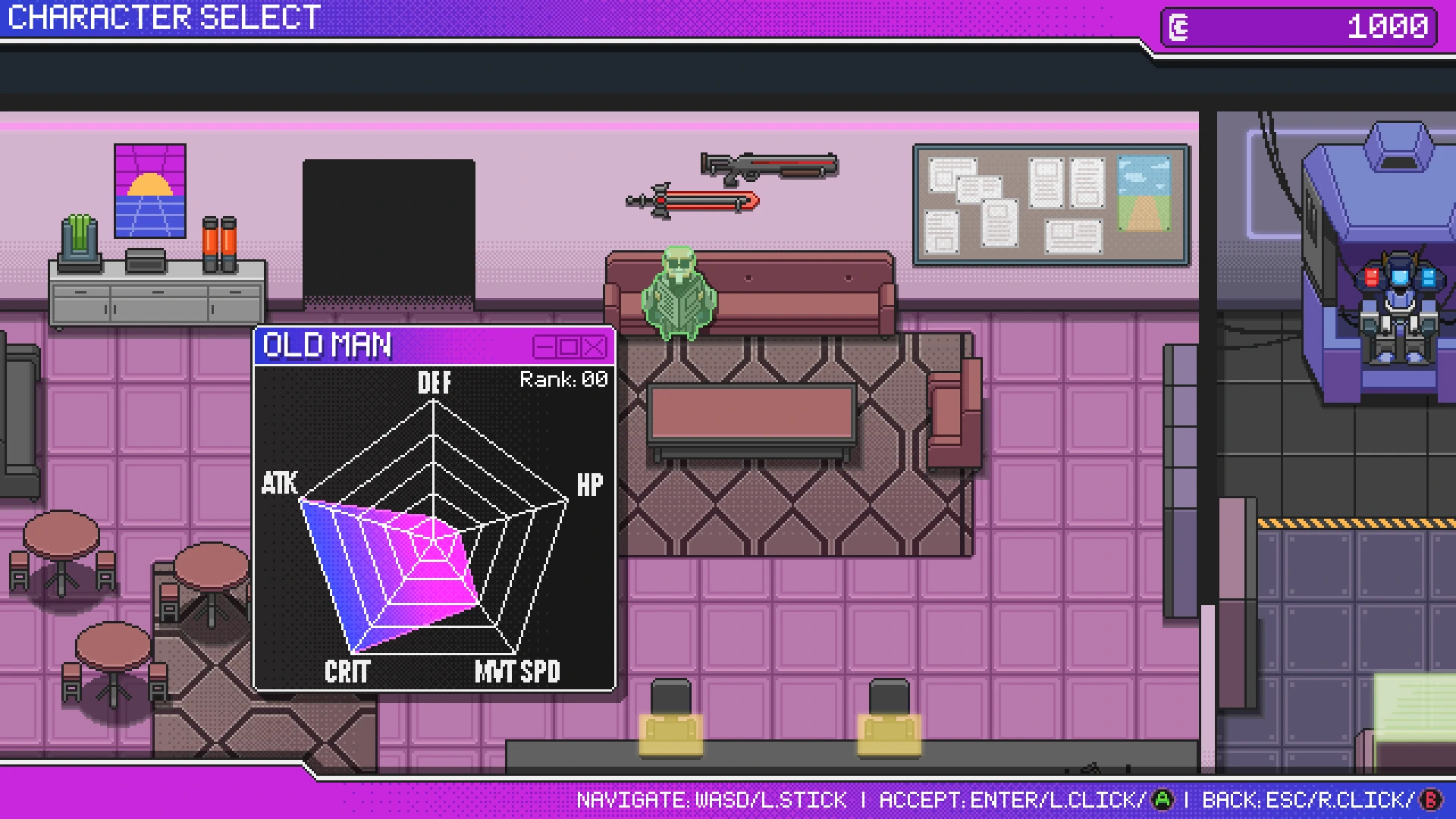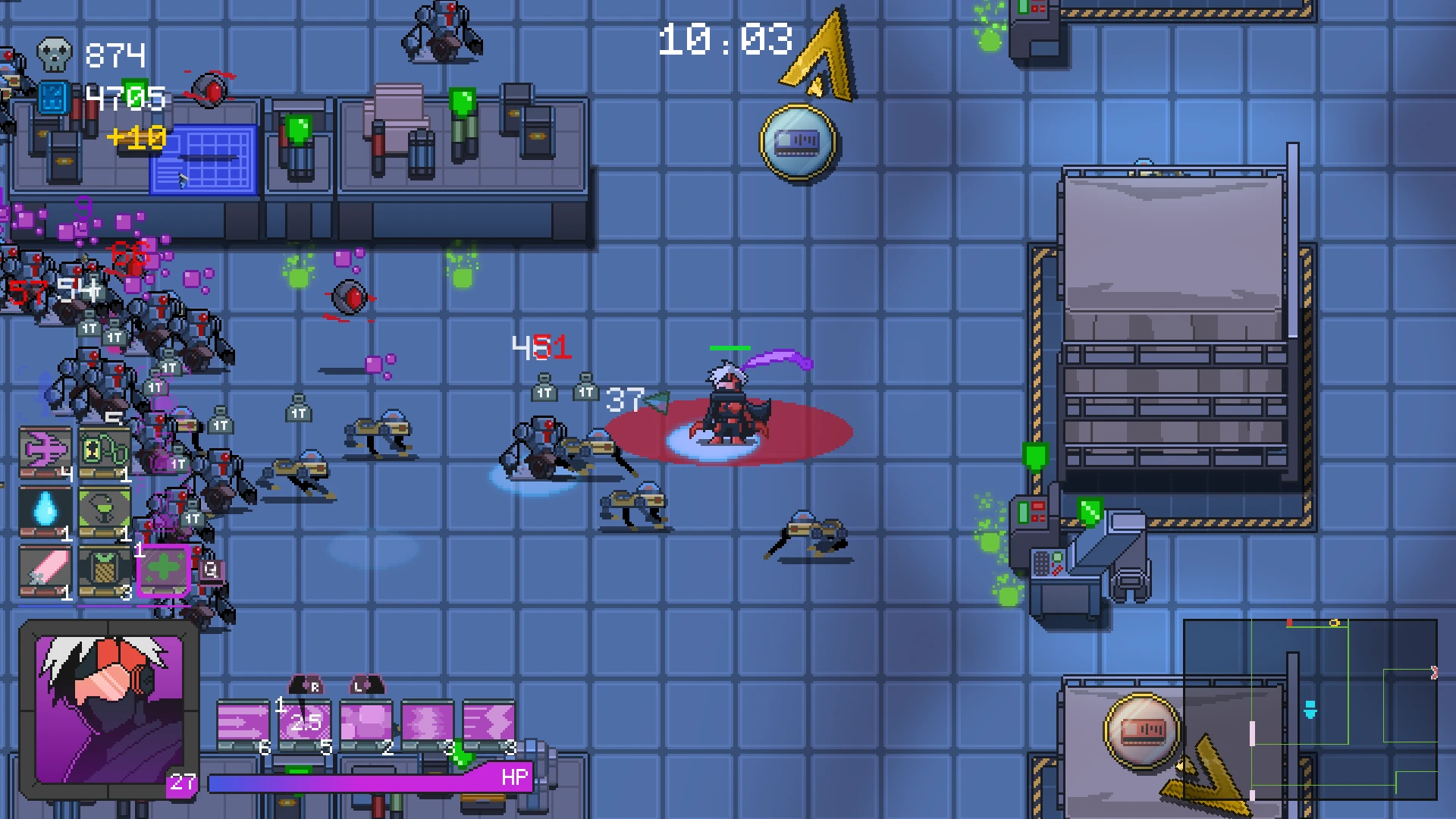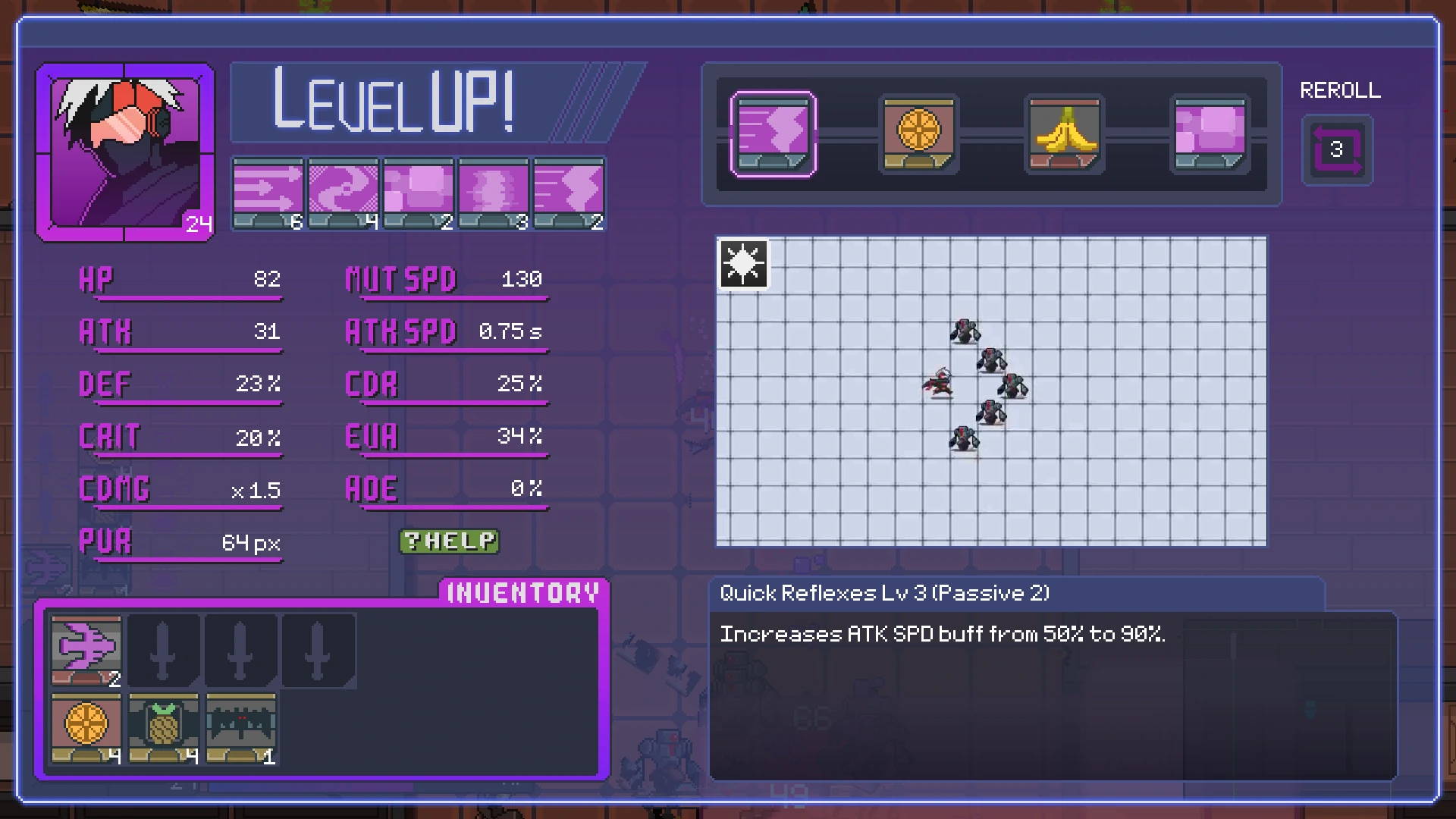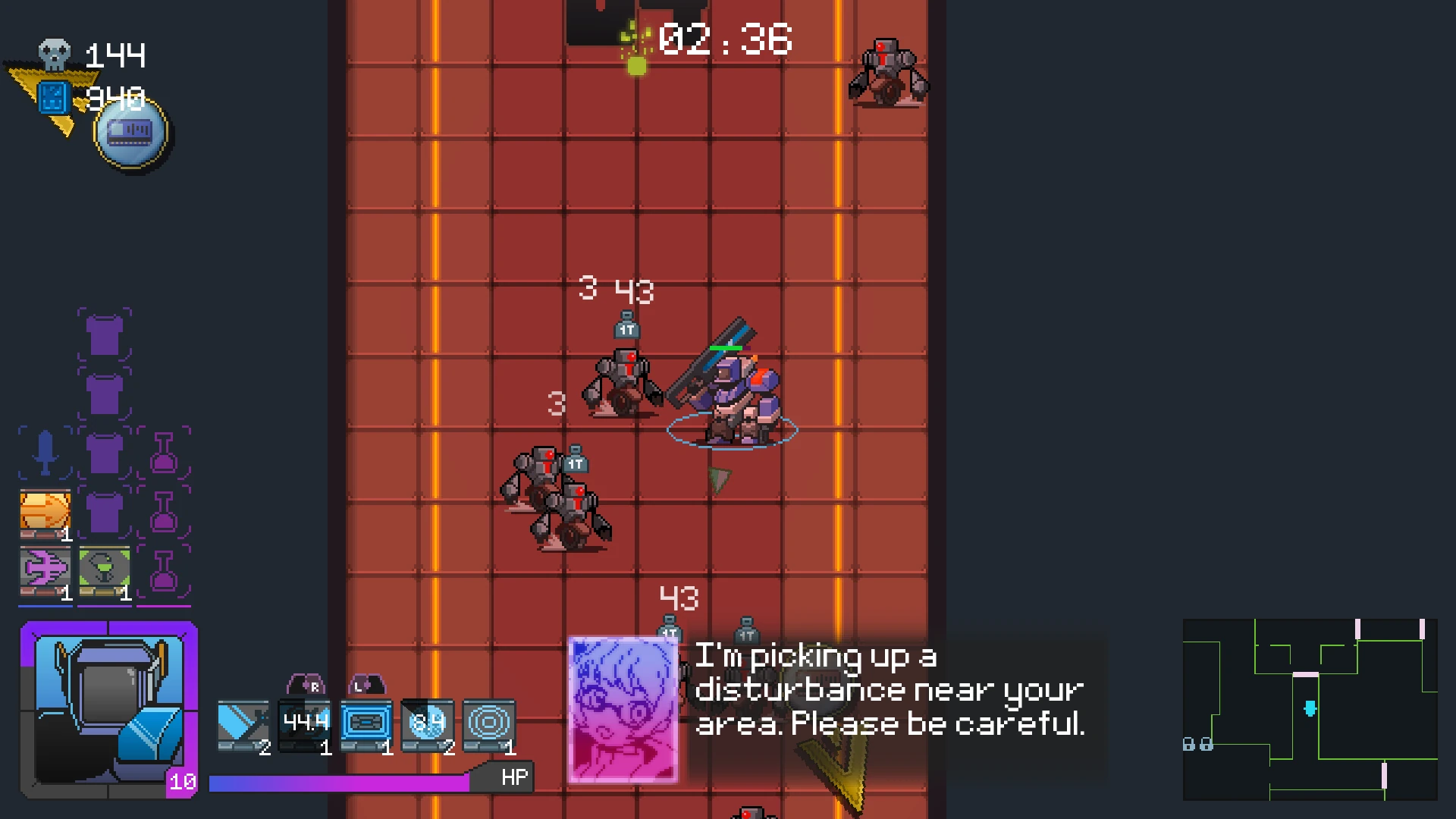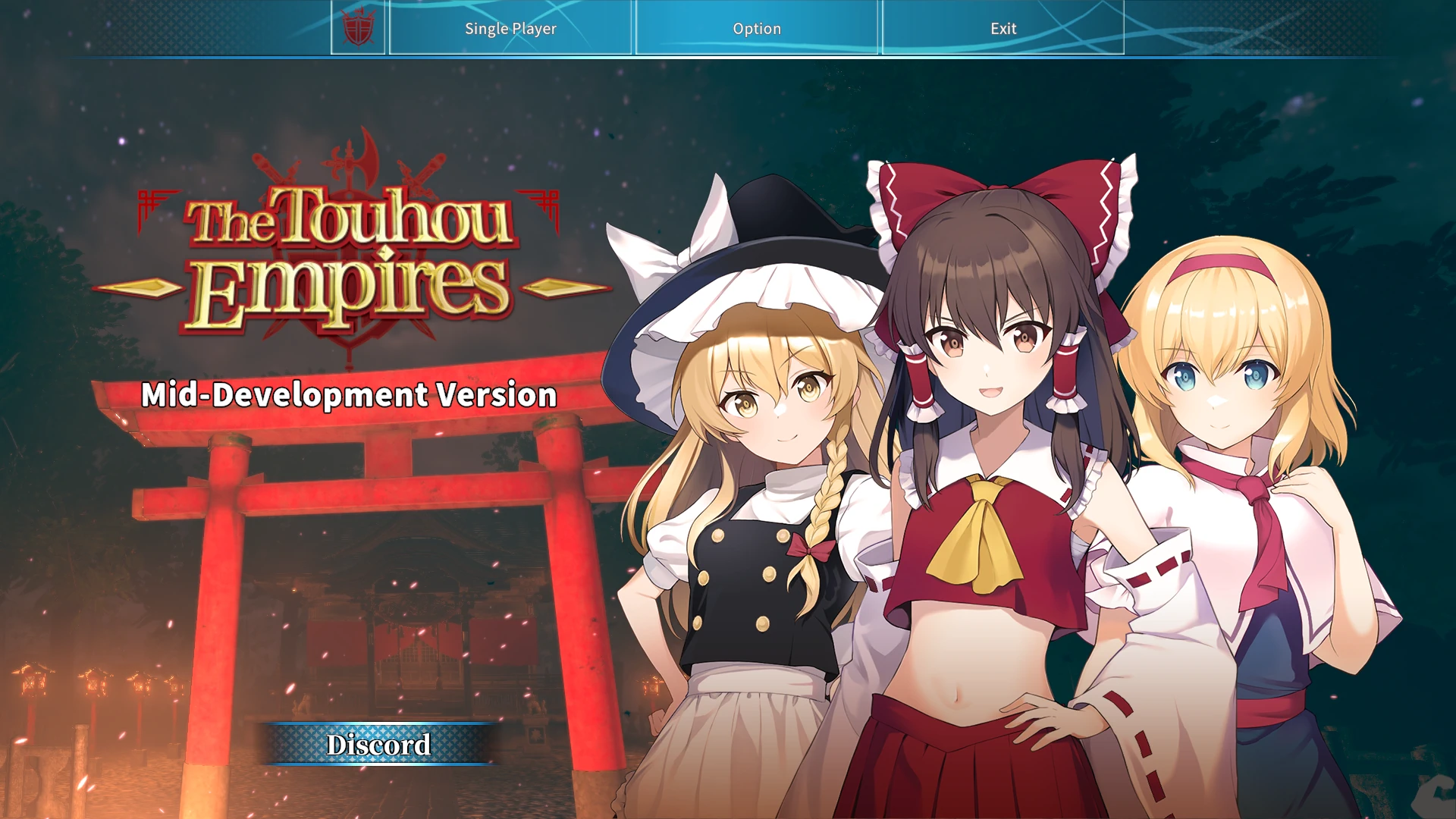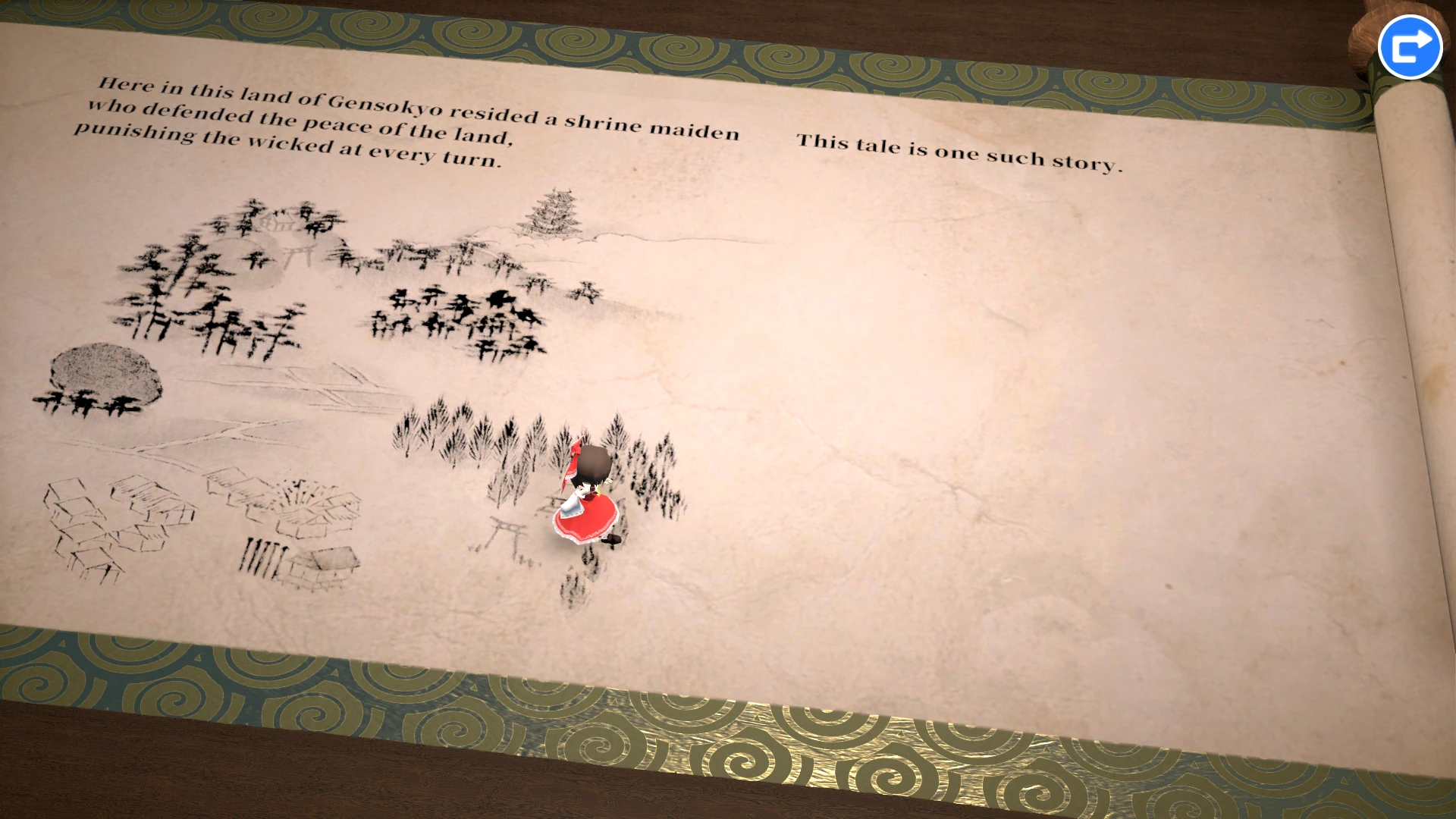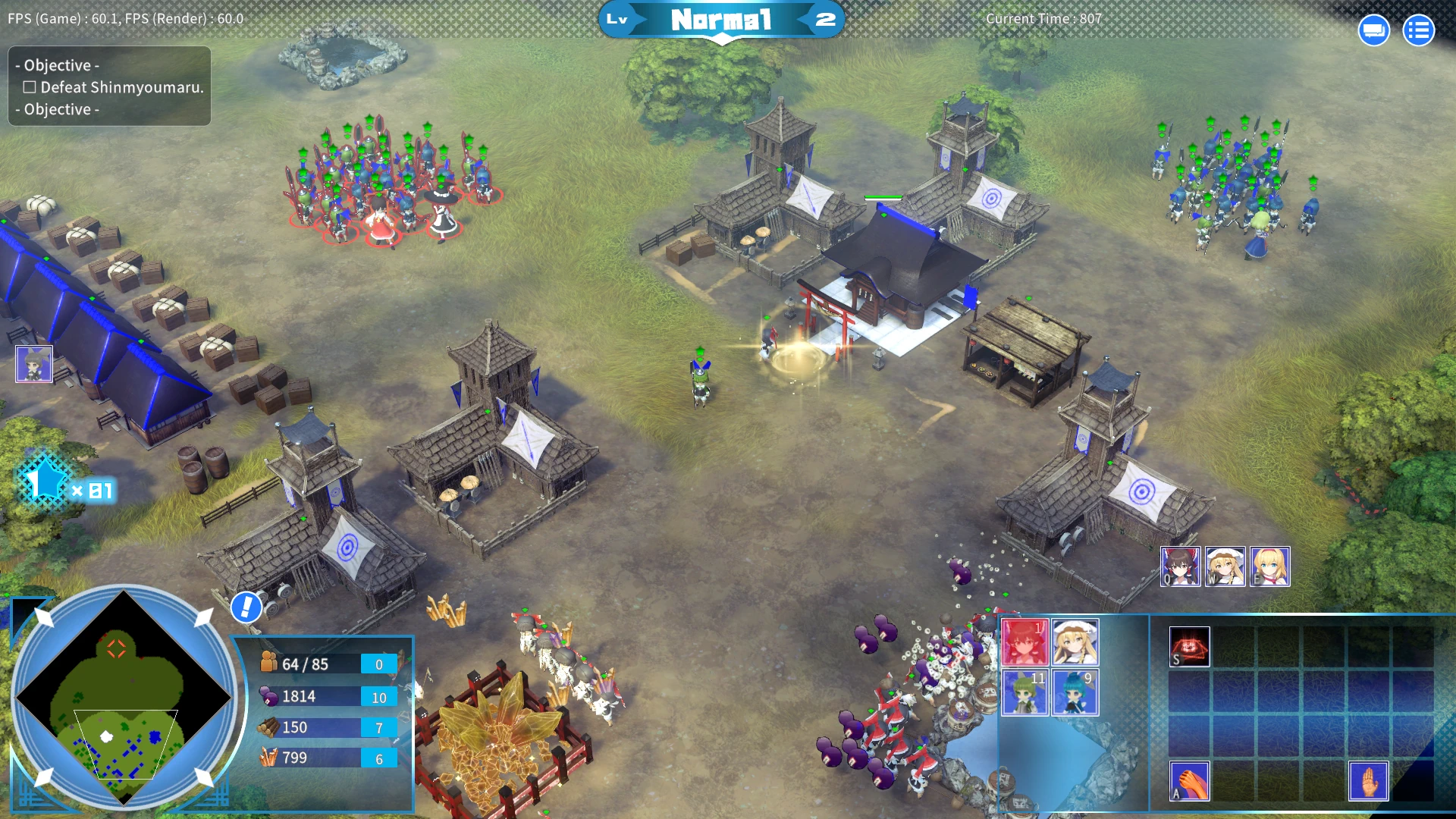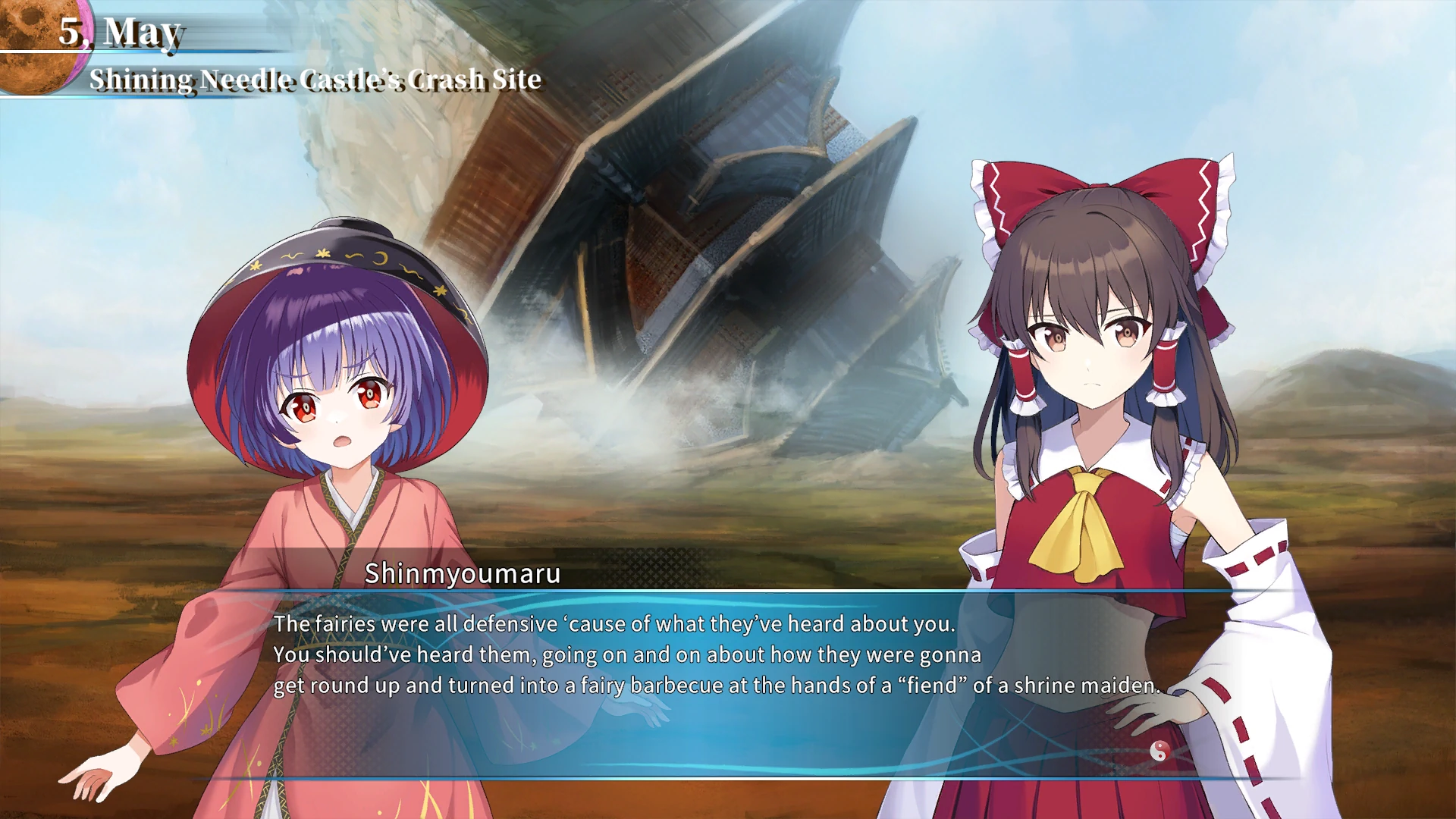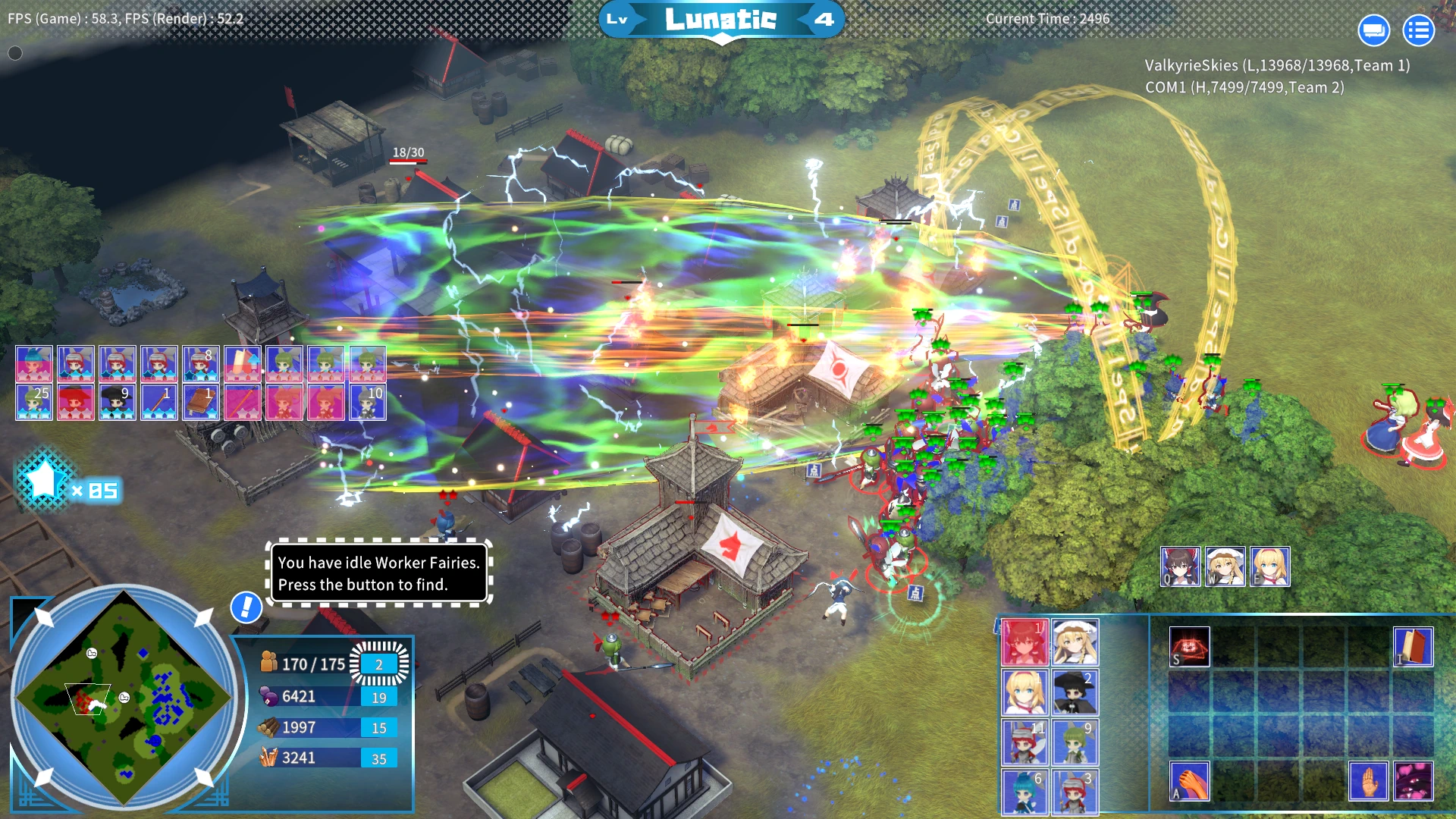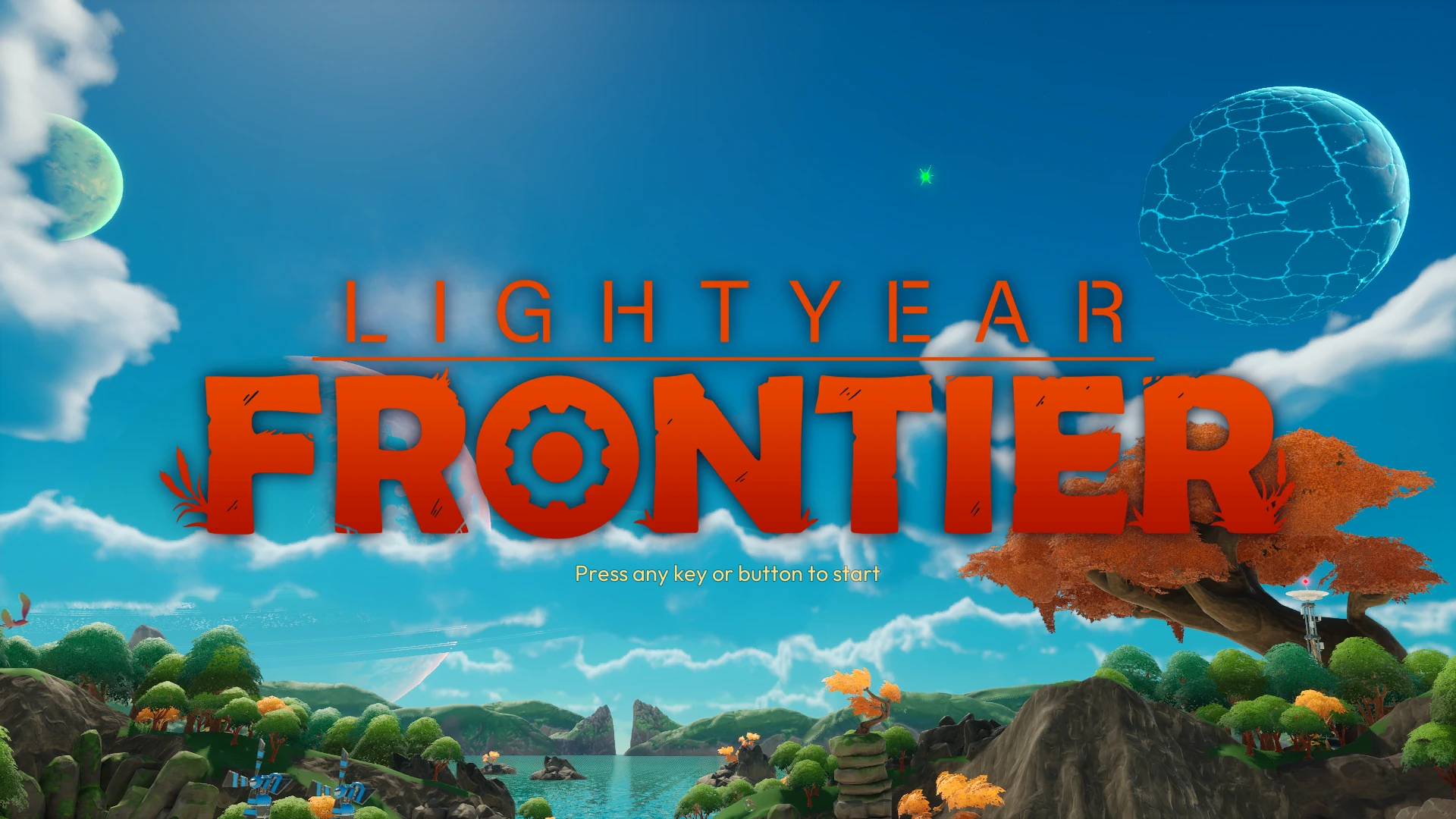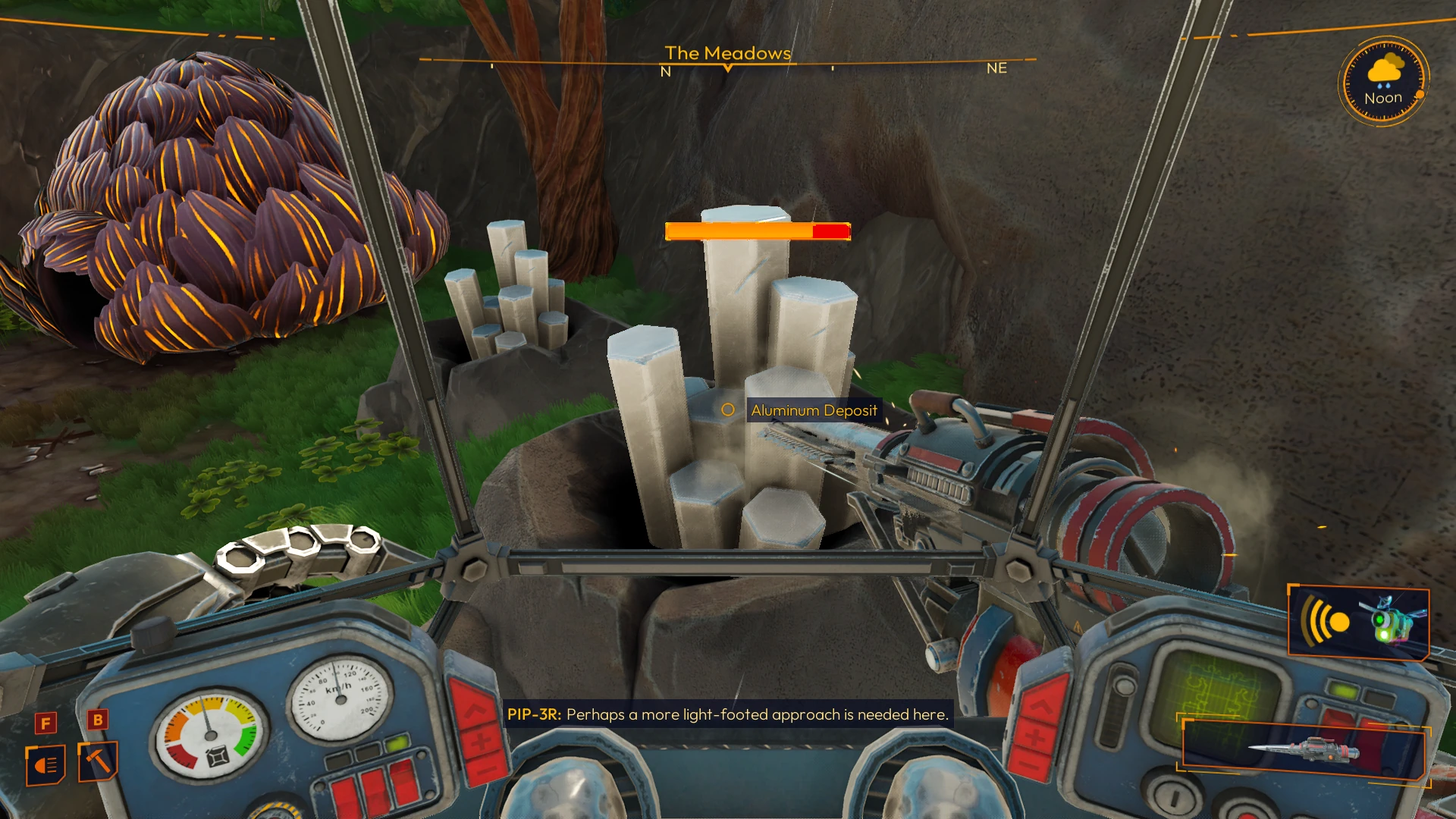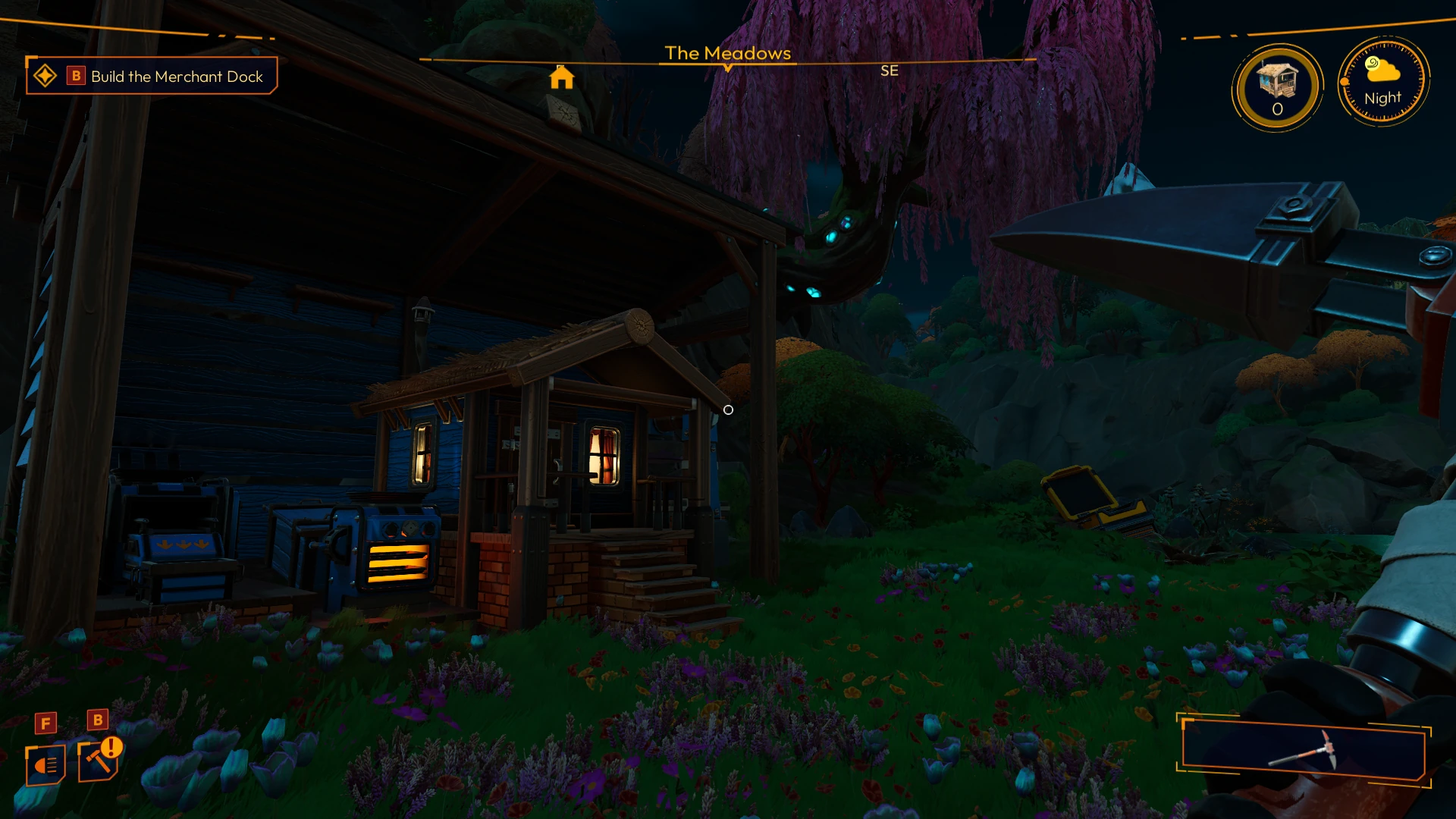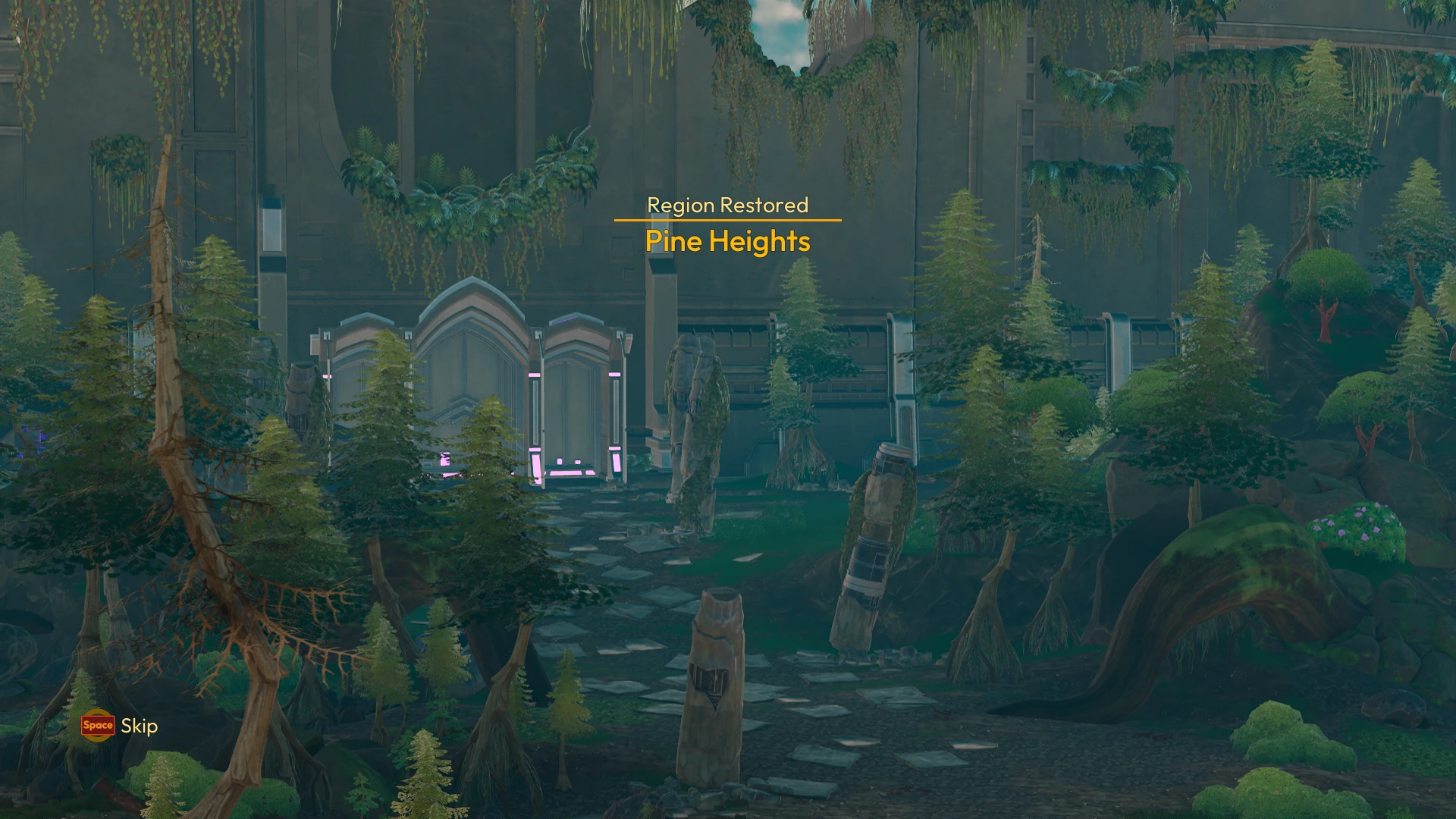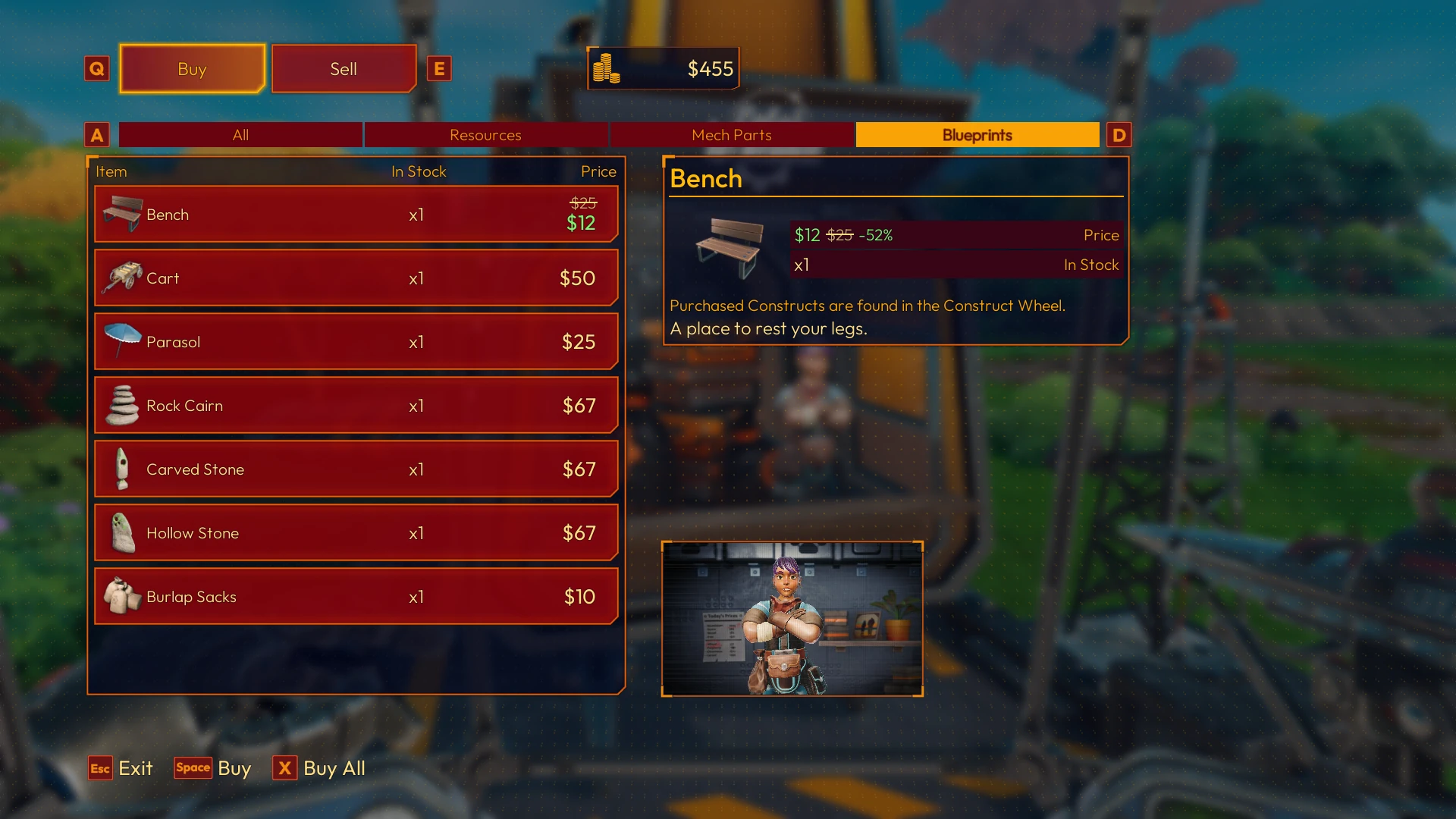[Article] Steam NextFest Winter 2024 Wrap-Up

Another year, another Steam Winter NextFest, that time of the year when Valve prods all the devs on the platform to stick out a demo and let everyone give their games a shot. I’ve always been very fond of these events as it’s a great way for indie and single/double-A developers to show off their games and drum up some attention in a much more engaging way than sticking out a trailer alone. So, trawling through the front page of the NextFest and some genres I enjoy, here's what I ended up taking a look at this year.
Tribes 3: Rivals - Demo
One of the things I’d always been sad about is that I’d missed out on the glory days of Tribes: Ascend, having never had anything more than a laptop with a pretty weak GPU for most of my teenage years. It was one of those series that was always spoken about with great fondness and a desire to see it return one day by those who'd been around to experience it. Enter Tribes 3: Rivals, developed by former Hi-Rez subsidiary turned independent studio Prophecy Games.
As I qualified above, I’m no Tribes veteran so I can’t make statements like “Tribes is back!” or “this isn’t faithful to the original Tribes experience”, but what I can say is that the Tribes 3 is fucking FUN. Skiing around the map at 200+km/h while dodging Spinfusor shots and swiping the enemy’s flag like an Eagle diving upon its prey is one of the most satisfying experiences I’ve ever had in an FPS to date.
In its current state, the available games mode are Arena 4v4, wherein each time fight over a respawning neutral bomb they must slam into their opponent’s base 7 times; Capture the Flag 12v12, where players must capture the opponent’s flag while defending their own while dealing with enemy turrets and radar structures; some training modes; and custom lobbies. CTF 12v12 is the core Tribes experience so it’s what I’ve sunk the most time into, though funnily enough it doesn’t have all of its music implemented yet unlike Arena 4v4. Maybe they thought it would be a better showcase to lure in a new audience? Who knows with Alpha builds.
Three weight classes with an offensive and defensive configuration each make up the game’s 6 classes (in its current implementation) and all have a distinct feel in how they race around the map, with Lightweights moving incredibly nimbly across the stage and being super maneuverable while Heavyweights prove to be more cumbersome in their movement however their high mass value allows them to build up a lot of speed very quickly when gravity takes hold of them.
Each class offers a few choices of weapons and tools to add some customizability to your playstyle, from the iconic Spinfusor which rewards well-lead shots to the low damage Chaingun which is ideal for picking off agile enemies low on health to the rapid firing Grenade Launcher which can saturate an area with splash damage, most all have their use cases and are a blast to use. Classes possess unique perks too, such as Light Offence’s increased pick-up range and Heavy Defence’s increased mass value, but not all of them are particularly notable.
So yeah, it’s good! So good that instead of playing multiple demos on the first day I decided I’d write up this whole article I ended up just playing this for 5 hours straight… And then an hour more the next day. Honestly by the time I’ve actually finished this article I’ll probably have played even more.
(Halfway through writing this article they updated it and changed the available game modes to 16v16 CTF and 5v5 Deathmatch as well as adding in a whole bunch of new voice over. I preferred Arena to DM, and 16v16 gets super hectic very quickly. Also I've more than doubled my playtime since...)
Impression: Very good! The arena shooter genre has felt quite neglected as of late so it’s great to see a legend return to rep it once more! Can’t wait to see the release version!
Children of the Sun - Demo
It only takes a cursory glance at Children of the Sun’s grungy, psychedelic presentation and unusual twist on the premise of its gameplay to understand why it was deemed a solid fit amongst Devolver Digital’s library of games. Developed by solo developer René Rother, Children of the Sun is a dark puzzle game about defeating crowds of enemies using only a single bullet.
Controlled using only the mouse, each stage starts with the player lurking around the periphery of their targets, tagging enemies and objects of interest while they look for the ideal spot to take their shot. Once the shot is taken, the player’s perspective is changed to that of the bullet. Each time the bullet takes out an enemy or strikes a target such as a car’s fuel tank, the player is given the opportunity to choose a new trajectory for the bullet, leading to the core gameplay loop of daisy chaining one kill into another. Success is achieved with the death of every enemy on the stage, while failure comes when the bullet hits anything and comes to a stop and enemies still live.
It makes for a pretty solid gameplay loop, and the game ensures it stays fresh by introducing new mechanics at good intervals such as the ability to curve the bullet’s flight path or to allow the player to change the bullet’s trajectory mid-flight if they’ve hit two enemies’ glowing weakspots prior. I also appreciate that the game doesn’t feel the need to pull its punches, with some of the levels requiring a few attempts to get the full idea of exactly how to pull it off. It’s also pretty slick how the game shows you the zig-zagging path your bullet takes in the aftermath of the level before showing how you placed on a scoreboard compared to other players.
If I were asked to describe what the game’s story and cutscene presentation was like, I think the words “psychotic episode” are the first things that come to mind. Cutscenes are fast-paced affairs of scratchy visuals and harsh noise which certainly convey a strong mood and will probably appeal to fans of similar Devolver published works like Hotline Miami, but I think I’ll pass on the style personally. Also don’t even think of going near this game if you’re epileptic.
Impression: Good, like an entire game was extrapolated out of those sequences where you guide a rocket in other games. I think playing the demo is a pretty good way of gauging if you’ll like it or not, so try it out if it sounds at all interesting to you.
Aden (亜電) - Demo
Japanese indie developer takayakata has produced quite the odd little work with Aden. Falling from the sky and crashing down upon a stage, Toaka has no memories beyond that her mission is to “Save the world.” Given a quick improv dance lesson by Kobako, a performer who’s routine she’s interrupted, Toaka decides that she’s going to use the power of dance to defeat mysterious beings known as ‘Purgers’ which appear out of nowhere and murder civillians.
The strange premise and later revalations bring to mind the works of mangaka Tsukumizu (Girls’ Last Tour, Shimeji Simulation) with its odd blending of both levity and existentialism, but I can’t say it hits quite as hard. The translation is also a little rough at times, but I’m not gonna hold that too harshly against a solo dev. The pixel art is pretty charming even if not super high fidelity, and it has a pretty quirky soundtrack that I enjoyed.
The actual gameplay is akin to both a 2D beat-em-up and a lightweight bullet hell, primarily involving the player dodging patterns of attacks and projectiles to slam into their opponent with their dash, depleting their health to zero and then performing a little rhythm mini-game to finish them off. It’s functional but it’s mechanically pretty thin and I didn’t get much out of it beyond the spectacle.
It’s a bit worse outside of boss fights when the player is fighting Purgers, the generic enemies of the game. They’re all very one note and the primary method of dispatching them is ‘Violent Sync’, where the player can grab them and thrash them around to hit other enemies with them, but it gets pretty repetitive in short order. Some attempts are made to keep it fresh like adding variants with different attack styles or giving some barriers that resist dash attacks or violent sync, but it just wasn’t enough for me.
It’s an interesting little work, but I don’t feel particularly strongly for it. The main reason I tried it out was because I had actually seen a friend share its trailer before and I had been mildly interested in how odd it seemed, and yeah, it does have that going for it at least.
Impression: It’s fine I guess, but neither the gameplay or story were quite enough to hook me.
Yohane the Parhelion - NUMAZU in the MIRAGE - Demo
With their Love Live! spin-off, Yohane the Parhelion - NUMAZU in the MIRAGE, developer BeXide Inc have put forward the brave question “what if Slay the Spire was worse?” That’s a pretty loaded opening, but I really can’t stress enough that this game is just a Slay the Spires clone. Starring the chuunibyou idol turned fortune teller Yohane in this fantasy alternate universe take on the second Love Live! Idol group, you follow her adventure as she delves into a mirror world inhabited by shadowy doppelgangers identifying themselves as Nightwickeds which seem to be causing trouble for their real world counterparts.
The core gameplay loop is just that of Slay the Spire, and if you’re not familiar with that game then it’s a roguelike deckbuilder wherein you start the game with a deck of basic attack and defend cards and travel through a gauntlet of rooms which may have enemies, events, shops, or resting sites, slowly building your play style based on what items and cards you find along the way. YtP-NitM is the exact same, albeit with far less interesting encounters, challenges, and far worse UI design.
Rather than displaying enemy intent and buffs/debuffs front and centre like StS does, YtP-NitM instead leverages its 3D visuals to use a more dynamic battle camera thus necessitating that these UI elements are shoved off to the sides of the screen instead. It makes it that bit harder to tie the enemies to their mechanics and the dynamic camera really doesn’t add much at all given that nearly every attack animation is incredibly basic. Not that the enemies have much of an identity anyway as every single non-boss enemy I encountered in the demo was a recolour/resize of the same little scrunko gremlin called a Mikan anyway. These all posed minimal challenge and had no unique identity in how they fought, a far cry from the distinctly different ways every enemy in StS fights.
The game’s controls are also incredibly frustrating, often teleporting the mouse’s position around the screen when you’re clicking on cards with very little feedback that it’s done so. Switching over to my controller didn’t even help either because it wouldn’t remove the mouse from the screen once I was using it and they began fighting each other for which one was actually in control as selecting stuff with the controller still moved the mouse around. Despite copying StS’s combat UI overall, they’ve somehow dropped a lot of the intuitive elements of it as well - to check what a Relic or Potion does in StS, you just hovered over it and the description would appear in a little window; in YtP-NitM however, checking your Charms or Summons requires you to click the bar they’re displayed on then navigate down a full-screen list. It’s these sloppy little downgrades that are often the most annoying things when you come down to this game.
So the gameplay is just a worse Slay the Spire, but would a Love Live! fan appreciate the other stuff it brings to the table? I don’t really think there is - the story is the kind of inconsequential filler you’d find in any gacha spin-off game that isn’t allowed to affect its main story’s continuity and the visuals and music are utterly bog standard. If you’re absolutely desperate for some more Yohane in your life… Well you’re still probably better off just going and playing that Metroidvania game they made in this exact same setting instead.
Impression: Poor. This is just a bad Slay the Spire clone. Just go play Slay the Spire instead. Even if you were here because you wanted more Love Live!, you should still just play Slay the Spire instead.
Reus 2 - Demo
Reus, by indie studio Abbey Games, was a quaint little god game about controlling a series of giants, terraforming and developing a planet to advance newfound human society through developing resources to suit their needs while keeping the speed of their development in check lest they get too ambitious and greedy, all presented in a darling 2D art style. Now, over 10 years since the original game’s release, Reus 2 hits the stage with a demo, and it’s a pretty decent showing.
While the core gameplay is mooostly the same, they’ve added more ability to customize turfs with the addition of a node-based system which allows for multiple nodes to be placed upon one turf unlike the original game’s monolithic turfs, and these nodess can be further expanded via limited use terraforming abilities unlocked via progress, such as stretching out turfs by molding them up into a mountain. It’s a very nice way to naturally expand the world and rewards the player very tangibly for progressing their set goals. Societies themselves were also fleshed out, having different beliefs which influence what they value most and interacting with one another via trade missions and the like.
One thing that did quite irk me is the feel of the pace on Reus 2 however. While Reus 1 tasked you to work within a set time limit, everything was otherwise set in a relatively lax real-time pace. Reus 2 meanwhile has introduced Eon, a sort of currency that’s spent when using most actions to introduce something of a turn-based countdown until the era’s deadline arrives. I don’t care for it at all personally, as it makes the game a weird mish-mash of real time and turn-based mechanics at once and it just feels like it throws off the comfy pace that Reus 1 pulled off so well.
Also changed is the aspect system, which in the past game allowed you to transmute placed resources into more advanced ones by imbuing them with certain aspects. Now aspects are simple buffs that can be placed upon a node, while unlocking more advanced resource types is done by completing missions for human civilizations. I’m kinda 50/50 on this one personally - it makes it easier to plan upfront what you’re going to do with your nodes, but it was also fun exploring the transmutation trees available.
Overall, Reus 2 is mostly just more Reus but with some new flavour tossed in amongst its mechanics. If you enjoyed the first Reus or just like cozy god games in general then you’ll probably like it, but it isn’t quite hooking me the way the first game did. Unfortunately there’s also a few game freezing bugs in the demo, having encountered 2 which forced me to kill the game from my desktop.
Impression: Good. If you liked Reus, you’ll probably like Reus 2, though its clash of real-time and turn-based mechanics really make the flow feel off compared to the original.
Duel Corp - Demo
Wielding an art style that could be described as a grungier Dragon Quest IX, German studio Dreameffect Entertainment’s Duel Corp is a lo-fi soulslike with an emphasis on directional based combat.
Once you’re past the serviceable character creator (as of the demo only the Knight class is playable), you witness the scene of an assassination in a cathedral before panning to the middle of a forest in which the player awakens within a pile of corpses after being robbed while they were unconscious. As is often the case with the genre, the storytelling is pretty minimal at this stage, so I can’t comment too much on it with what little I could play.
What I can comment on is the combat, which was pretty enjoyable. You’ve got your standard fare soulslike aspects such as your dodge rolls, estus flask, resting sites, and the item cross, but what makes Duel Corp stand out is the focus on directionality in combat. Instead of light and heavy attacks, the player uses the Square, Triangle, and Circle buttons to attack from the left, straight on, or from the right respectively, with combos requiring the player to mix up directions to keep a good speed going.
Similarly, rather than using a standard guard, the player must hold R2 and one of these attack buttons to guard a specific direction lest the enemy’s attack get past their guard, and timing the start of the player’s guard to match the enemy’s attack will result in a parry which can stagger the enemy. Enemy’s attacks are well telegraphed but at the same time not too cumbersome to be predictable, and a decently high lethality means combat keeps its stakes decently high even if the enemies aren’t often that hard to deal with.
Along the way, the player can also find Abilities and Talents, each of which have 4 slots they can be equipped into. Abilities are active attacks such as a charging attack that stuns enemies on impact, while talents are more passive ability like a shield effect that uses your mana to mitigate damage. These add a lot of customization to your character beyond just their equipment and the possibilities seem pretty good.
The first boss presented a decent challenge, possessing high lethality attacks that punish players who don’t try to parry and a second phase which puts your dodging and stamina management to the test, but once you’ve gotten comfortable with the game’s systems you can cut him down to size very quickly by playing well. With their defeat, the player reaches the first town, with further progress beyond here roadbloacked as the demo doesn’t go any further. Still, there’s more stuff to play around with, from talking and trading with NPCs to using the Cathedral to initiate PvP or take part in solo or co-op quests in seemingly procedurally generated zones.
It’s neat, doing away with the dramatic presentation so common across the genre while still retaining the core essence of the gameplay loop with some neat twists of its own added in. I suspect any Souls fan who finds their way here will enjoy what it has to offer, and given that I don’t even like soulslikes for the most part it may have a wider appeal than even that.
Impression: Very good! A great demonstration of how presentation can be cut back to the basics without losing any mechanical depth.
TH3-M15 GUILD - Demo
Vampire Survivors was a smash hit that seemingly arrived out of nowhere, taking the world by storm with its incredibly simplistic gameplay loop and birthing the “Bullet Heaven” sub-genre. For some players however, the simplicity and lack of direct connection to the combat was a harsh turn-off from the game. Enter sibling developer team Capybara Forge LLC with their game TH3-M15 GUILD, a new attempt at the genre which makes use of more active abilities and twin-stick shooter style aiming.
With some pretty solid pixel art, TH3-M15 GUILD embodies the aesthetic of the cyber ninja as the player takes control of 1 of 3 mercenaries currently available in the demo, each with a set basic auto-attack, an active ability (left click), an ultimate ability (right click), and 2 passives. Each character also has a different number of slots for weapons, armour, and consumables they can pick up during the course of the mission. Much like in Vampire Survivors, levelling up presents the player with a choice of abilities or equipment to acquire/upgrade, and this forms the key of developing the character’s build in a given playthrough.
While this system makes for much more distinct characters than in Vampire Survivors, it’s also a little irritating that every single ability other than the basic attack has to be unlocked as well, slowing down the rate at which you can customize your build beyond the character’s set roster of abilities which you likely won’t be able to survive without. Even beyond that though, I rarely felt like I had any particularly synergetic build going, my only particularly strong run being one where I was able to get an evasion increasing item and a cooldown reducing item together on Karambit to really take advantage of his attack speed buff gained when taking damage, but that synergy didn’t really go beyond his basic attack with the other weapons still just feeling like they were… Just kinda there I guess?
I’m getting ahead of myself there though - the gameplay itself is akin to Vampire Survivors however most weapons have to be aimed in a direction with the mouse. Attacks fire off automatically based on their cooldown stats, while active and ultimate abilities are activated with a mouse click each and have much longer cooldowns. Actives tend to be evasive or survival abilities, while ultimates tend towards the more destructive side. Each character’s unique starter weapon tends to play heavily into the directionality, such as Old Man’s directional stab attack or Karambit’s energy blade projectiles, while the more general weapons available through levelling can have more freeform patterns such as attacking the nearest enemy or leaving a damaging trail behind the player, though multiple follow the mouse direction pattern too.
Unlike Vampire Survivors, which primarily used infinitely repeating maps prior to later updates, the map present in TH3-M15 GUILD’s demo is pre-set and possesses a number of objectives and obstacles the player needs to overcome. Enemies spawn constantly and generally fight by trying to swarm the player with their numbers. Using currency gained by defeating enemies, the player can open barriers and purchase items around the map. Generally the maps look pretty good, though I often found the corridors and rooms with narrow entryways were often a death sentence as enemy swarms coming through the accessways can quickly block the player off and spell a swift demise.
Shaking up the enemy waves are occasional events where the player will be tasked to do something such as defends a large crystal against enemies for a minute or deliver a bag to a location on the map, offering the player a reward for successfully doing so. At set time intervals, boss enemies will spawn, posing a more dangerous challenge for the player than most enemies. Determined to stand out from its progenitor, TH3-M15’s bosses tend to be a bit more involved, utilizing a variety of attack patterns and abilities telegraphed by MMO-style AoE markers that the player must dodge by staying mobile. It’s a nice change to make them feel like more than damage sponges… Except then they also feel incredibly spongey on top of that.
Coming from that point, maybe there’s just something I really wasn’t getting, but the difficulty scaling feels a bit much in general. Even from the very beginning enemies can often take 3 hits to dispatch, and I never felt like I was able to quite hit the level of wave clearing power the increasing tides of enemies seemed to demand. Enemies can chunk through your health quickly, healing is relatively sparse, and attacks that are anything less than your ultimate ability often feel like they do barely any damage to the bosses. It gets quite frustrating, and as determined as I was to try and clear the entire first level for the sake of getting a complete image for this article, I was only ever able to get as far as acquiring 1 of the 2 keycards required before being obliterated by an absolute deluge of mini-boss enemies the game threw at me come the 15 minute mark.
I think there’s a lot of solid ideas behind this game, it certainly got me to write a fair bit about it after all, but the lack of the feeling of a good build coming together and an unforgiving difficulty curve meant it didn’t land quite so well for me.
Impression: Fine. I like a lot of its ideas, but its reality is rather frustrating and after multiple runs I didn’t feel like I had made any significant progress.
The Touhou Empires - Demo
With a track record of fangames created based on ZUN’s Touhou Project, Japanese developer Neetpia have made a rather interesting decision with their latest project in making it a Real-Time Strategy game within the setting. Wearing its Age of Empires 2 inspirations on its sleeve, The Touhou Empires is a pretty enjoyable twist on the venerated classic.
Once more is an incident occurring in the magical realm of Gensokyo - from the heavens, a wealth of strange iron tools and weapons have rained down upon the land. The fairies, normally too weak and disorganized to prove any real danger to the stability to the realm, have taken up these weapons and been greatly empowered by them. Using gifts of sacred alcohol, the various factions within Gensokyo have been enticing fairies to their cause, leading to all-out war as each faction puts forth claims, such as the Scarlet Devil Mansion declaring absolute domination over the realm. It’s a pretty fun setup that makes good use of established relations and structures within the setting and serves the game’s premise very well.
The core of the gameplay itself is Age of Empires 2 with the twist of hero units added into the mix. What faction the player is playing determines what heroes are available to the player, though as of the demo the only playable faction is the Hyakurei Shrine, represented by Hyakurei Reimu (buffs nearby troops), Kirisame Marisa (can deal a lot of siege damage with her Master Spark), and Alice Margatroid (can summon a swarm of temporary units). Judging by buildings and buffs granted as the player advances in Difficulty Level (the equivalent of AoE’s Ages), different units and building types will also be tied towards choice of faction.
For the more straightforward comparisons; Sacred Wine serves as the analogue to food, Faith replaces Gold as the primary research and elite unit resource, and Wood steps in to fill the role of both Wood and Stone as the primary building resource. Building houses increases your population cap, certain categories of units counter other categories such as cavalry beating archers, you advance your overall tech level by advancing in Difficulty Level via an expensive research project, and certain buildings can be garrisoned to serve as ranged emplacements against incoming enemies.
Overall it’s a pretty solid if simpler AoE2 experience with a Touhou skin. My key criticisms currently would probably be that they could do with recording some more unit barks as the current ones can get repetitive quickly, the pathfinding is pretty rough, and it could do with some greater unit variety. The demo was listed as the “mid-development version” so hopefully all will be improved by the time it hits release.
Impression: Very good! Once it gets polished up and finished, I imagine this one will enjoy a pretty good rep within the Touhou fangame space.
Lightyear Frontier - Demo
“Comfy” games have enjoyed a lot of popularity the past few years, eschewing the competitive or challenging paradigms classically associated with video games and instead focusing on providing a relaxing and laid back experience. Joining many a game in this frontier is FRAME BREAK’s Lightyear Frontier, a game which sees the player crash land upon an alien world in their farming mech and set about improving the local environment, creating their niche in the world, and solving the mysteries of some unsolved ruins.
So it’s essentially one of those survival-crafting games, but without the survival element and you also have a big mech to ride around in with similarly-mech sized tools to aid in your forestry endeavours. It’s pretty neat I guess, it certainly does make you feel like quite a large presence in the world with its high perspective, lumbering (but not overly sluggish) turns, and how it tips over when you land badly and tumble down a hill, necessitating you hopping out and flipping it back over, but uh… I don’t know, it all kinda just felt pretty standard to me.
You craft your way up through various structures and stations, upgrading your mech and base alike with things you manufacture, then use your tools to further shape the environment, explore, sell excess to the merchant once you have a landing pad, and clean up pink goop around the place to restore the biome. It all works pretty cleanly and it’s satisfying to watch your base and plots expand and improve, but I never really felt like this was an experience I could only find in this game either. Maybe once the full game hits there’ll be something more substantial to really hook players, but as of the demo there’s only your standard comfy game gathering-crafting loop with a hint of possible mysteries to come in future.
Impression: Fine. If you enjoy comfy games and sci-fi then you’ll probably like what it’s serving up, but otherwise it’s pretty par for the course in its genre.
Other Mentions

I had intended to give some VR games a shot to shine a spotlight over on that niche of gaming, buuuut things didn’t quite work out on that frontier. Sushi Ben, Big Brane Studio’s narrative adventure game about saving a sushi restaurant in a colourful, anime inspired world, had a promising start in its initial few minutes, but after accidentally quitting out of the game while trying to disable vibration in the options, it then refused to recognise the existence of my controllers any time I launched it again. This was probably Windows Mixed Reality’s fault as usual, but unfortunately it meant I wasn’t able to play the game any more. Int10h Studio’s VR shooter Farcaster meanwhile was just too much for my aging RX570 graphics card to handle, so again, not really their fault, but it’s a shame that it meant I didn’t get a chance to give my Reverb G2 a proper spin again.
Back on the flat game frontier, I also played the demo for Leap Studio’s Realm of Ink, a roguelike isometric action game, however shortly into starting the game I had a suspicion it was derivative of Hades. After streaming some gameplay to some friends who had, they all mostly unanimously agreed it seemed HEAVILY derivative of Hades, and having not played that game myself I felt like I probably wouldn’t be able to provide a worthwhile commentary as a result.
Final Thoughts
I’d lean towards the positive for my feelings on this year’s showing at NextFest, though compared to prior years it feels like there’s a LOT more derivative works this year, be they spiritual successors to popular genres or just straight clones of the trendsetters. Chinese developers are also seeing much more representation among English language releases after having been something of a dark horse in the industry for a long time, and hopefully we’ll see some fresh new ideas and perspectives enter the eco-system as a result.
It probably comes as no surprise that Tribes 3: Rivals was my favourite game of the lot I played, especially seeing as it came from an experienced dev team working with a proven concept which has been absent for quite some time now. Buuuut if I had to give it to a more indie title then I’d probably hand it to The Touhou Empires, because even after all these years Age of Empires 2 still holds a special place in my heart, and sprinkling a bit of Touhou whimsy on top of that makes for a treat. Now add a Cirno faction or I riot.
Well, until nextNextFest, that’ll be all for now.





